Road Trip to Washington - Day 5
/I left off in the last post going to sleep in the mostly dry truck listening to the rain.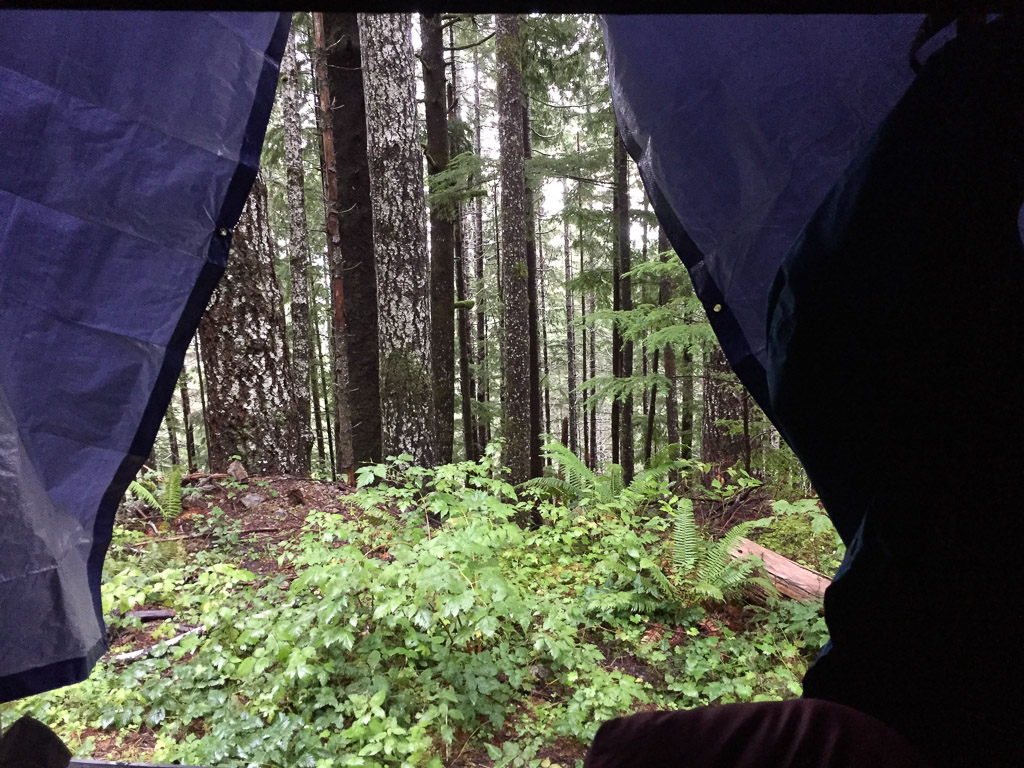 View from the sleeping bag.
View from the sleeping bag.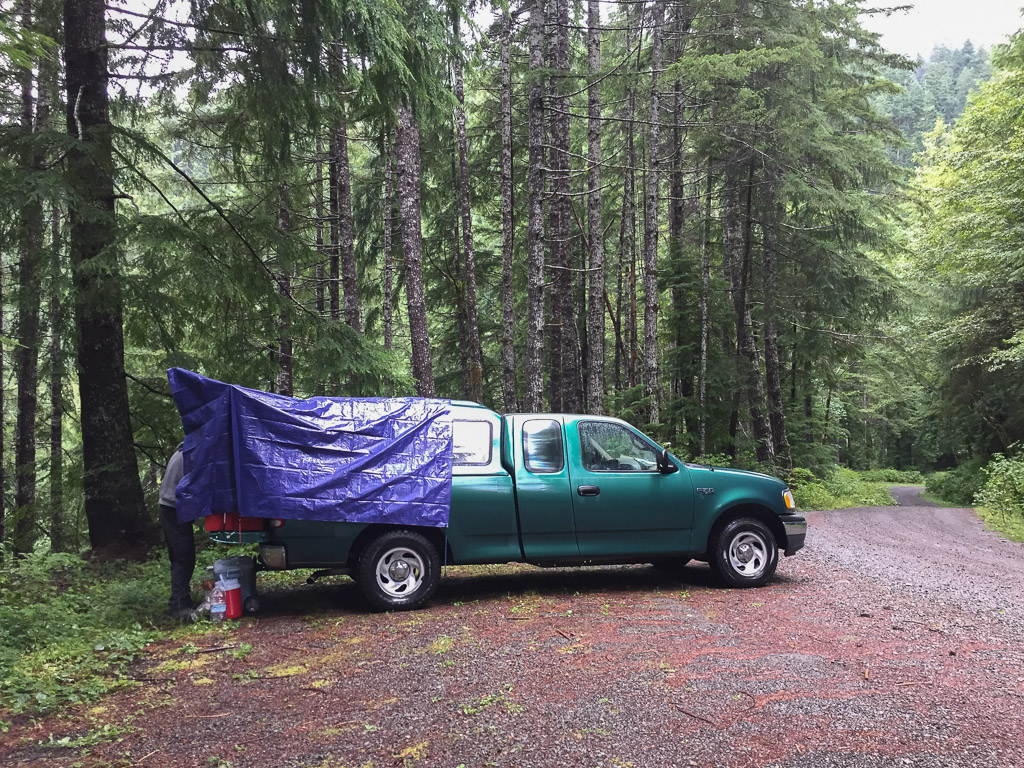 This is where we stayed. We didn't have a good look at it the night before when it was raining and dark.
This is where we stayed. We didn't have a good look at it the night before when it was raining and dark.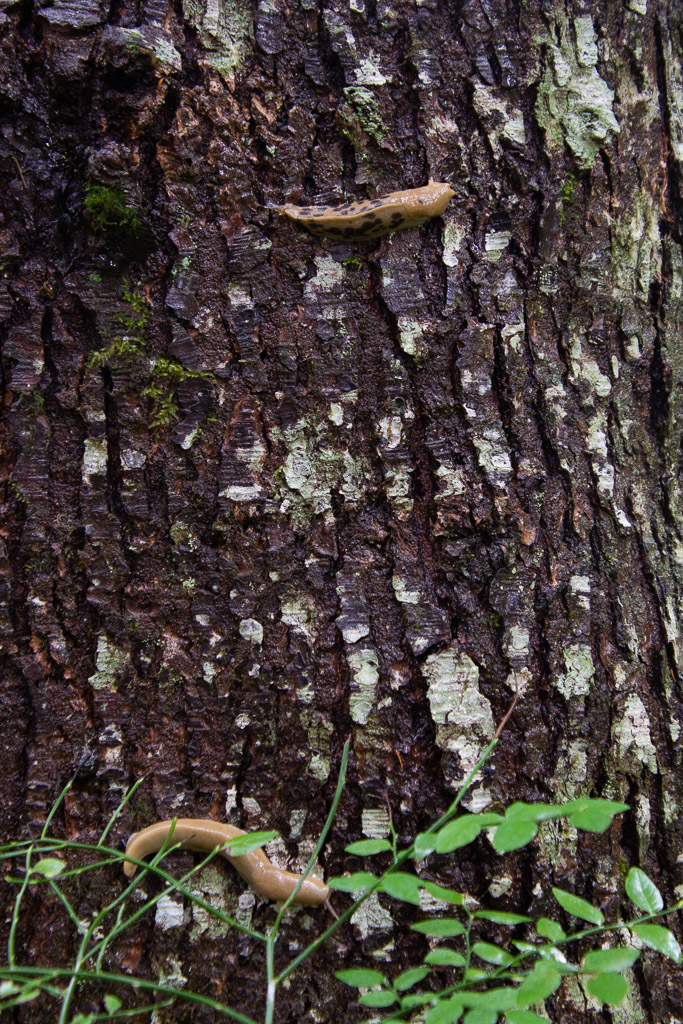 More of my slow-moving wildlife subjects.
We had spent the previous day on the east and north sides of Olympic National Park. We wanted to see the rainforest areas which are on the west side. The place we camped was near Lake Quinault and there are several access points to the Park along the road that follows the Quinault River.
More of my slow-moving wildlife subjects.
We had spent the previous day on the east and north sides of Olympic National Park. We wanted to see the rainforest areas which are on the west side. The place we camped was near Lake Quinault and there are several access points to the Park along the road that follows the Quinault River.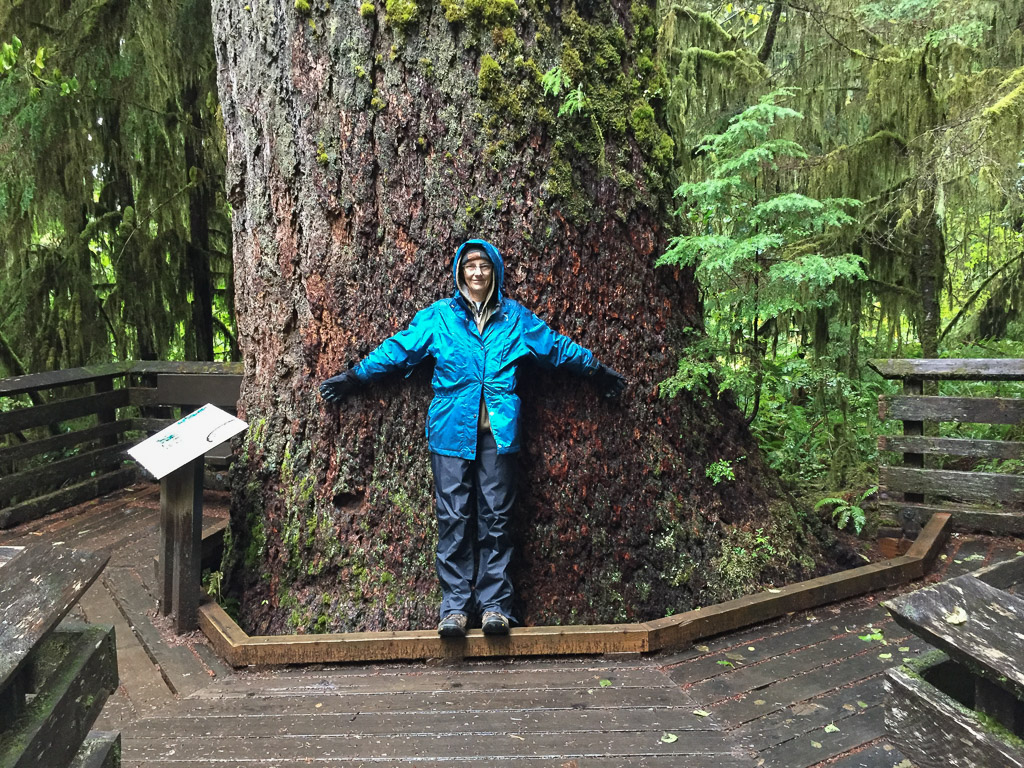 We started with the Rain Forest Nature Trail that leads to Willaby Creek Falls, one of the points on the Waterfall Trail we were following.
We started with the Rain Forest Nature Trail that leads to Willaby Creek Falls, one of the points on the Waterfall Trail we were following. 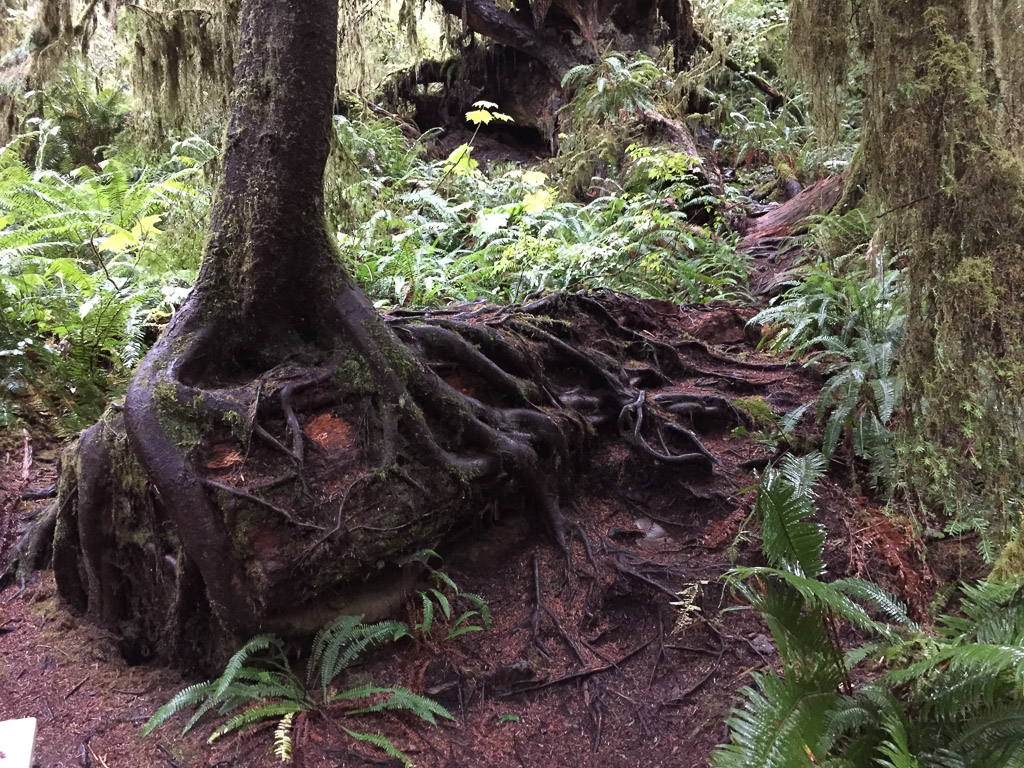 Everywhere you look there are trees rooted over fallen trees. Every surface seems covered with something growing.
Everywhere you look there are trees rooted over fallen trees. Every surface seems covered with something growing.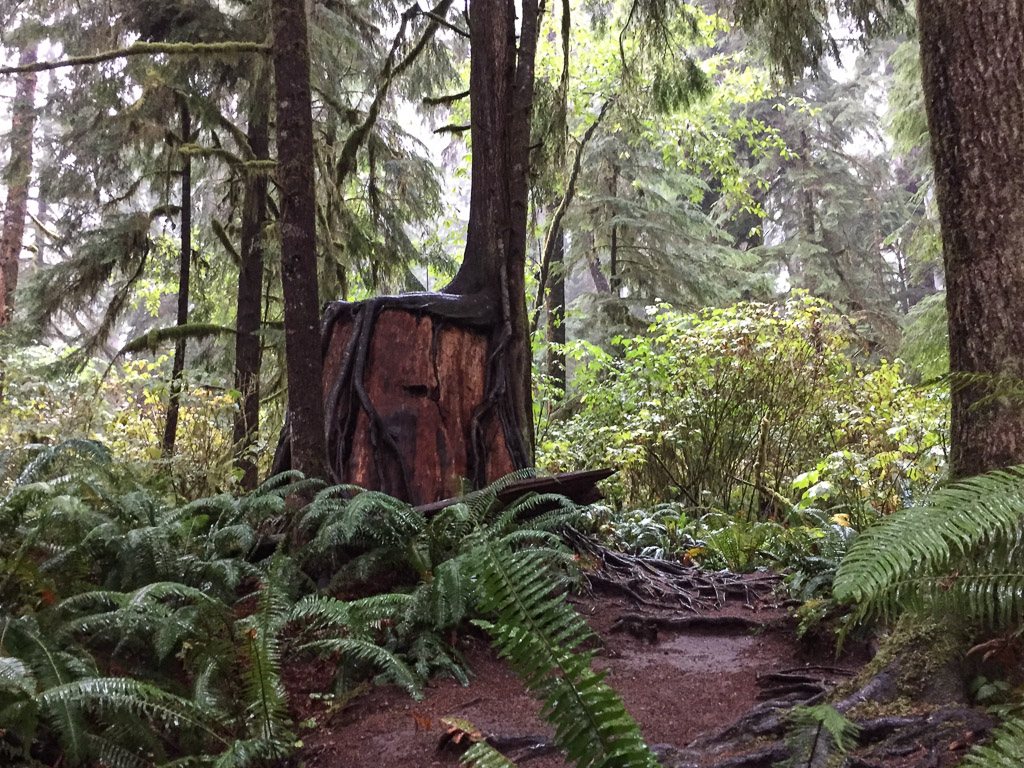 The park protects the largest old-growth forest in the Pacific Northwest. Rainfall varies from 12 feet (!) in the temperate rain forests on the west side to 40" on the east side.
The park protects the largest old-growth forest in the Pacific Northwest. Rainfall varies from 12 feet (!) in the temperate rain forests on the west side to 40" on the east side. 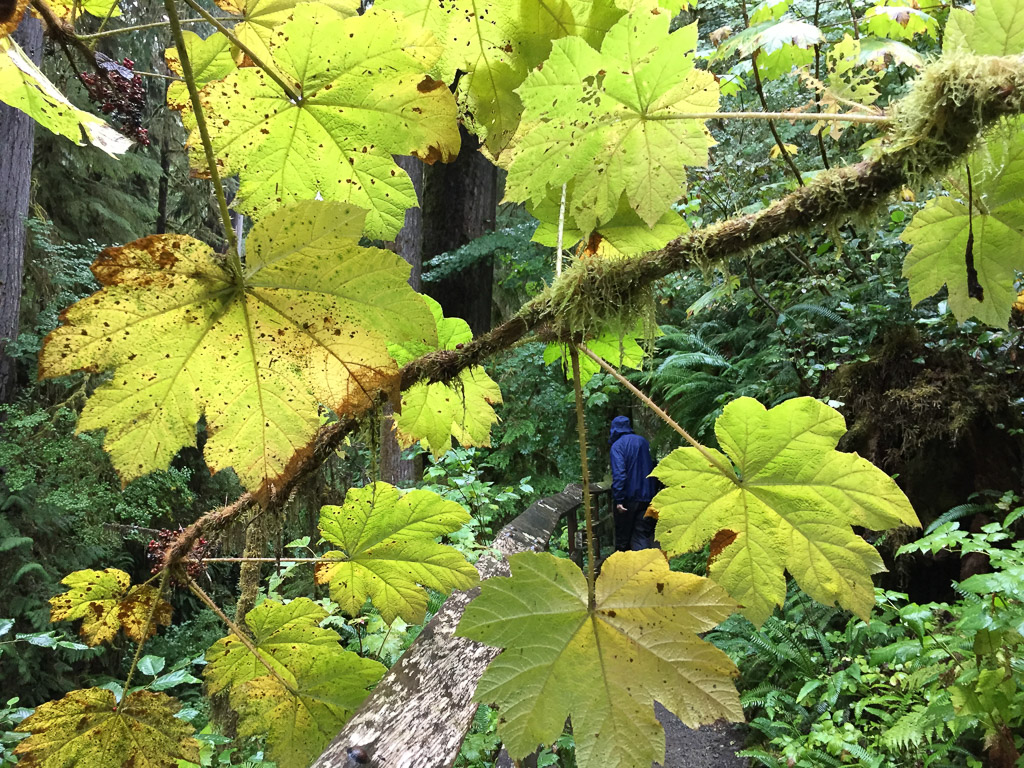 More of the Devils Club with a good view of he spines on the leaves.
More of the Devils Club with a good view of he spines on the leaves.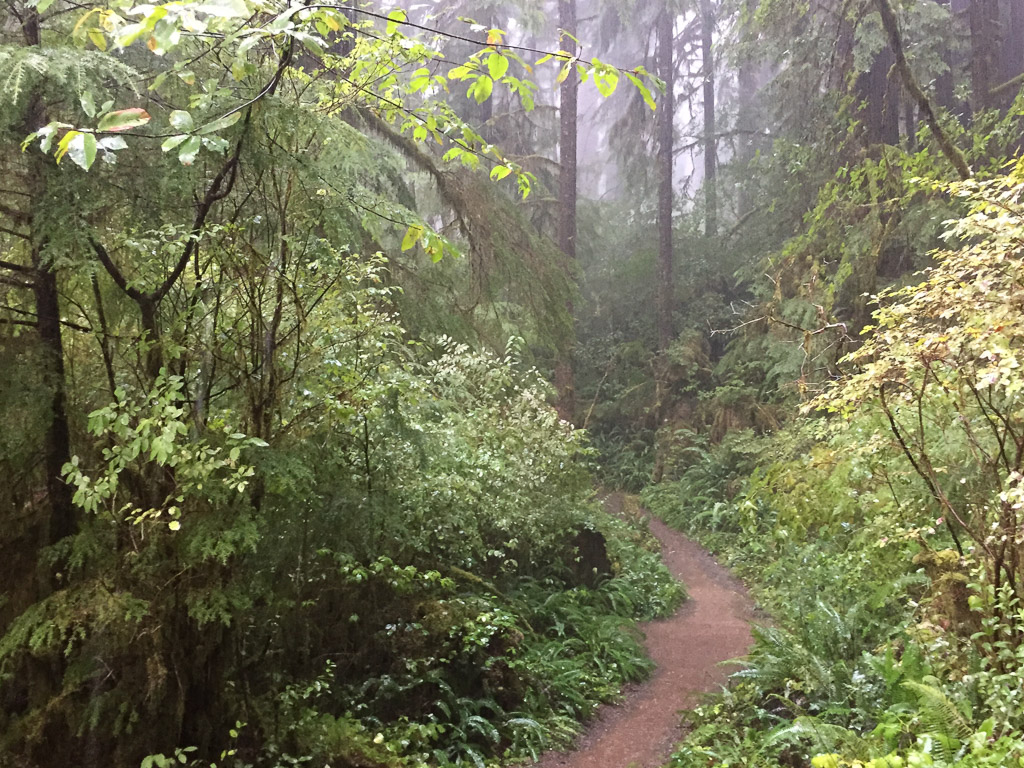 Did I mention that this was a walk through the rain forest? And rain it did. We stood for awhile under the umbrella because is was raining so hard. On our way back this path was filled with water.
Did I mention that this was a walk through the rain forest? And rain it did. We stood for awhile under the umbrella because is was raining so hard. On our way back this path was filled with water.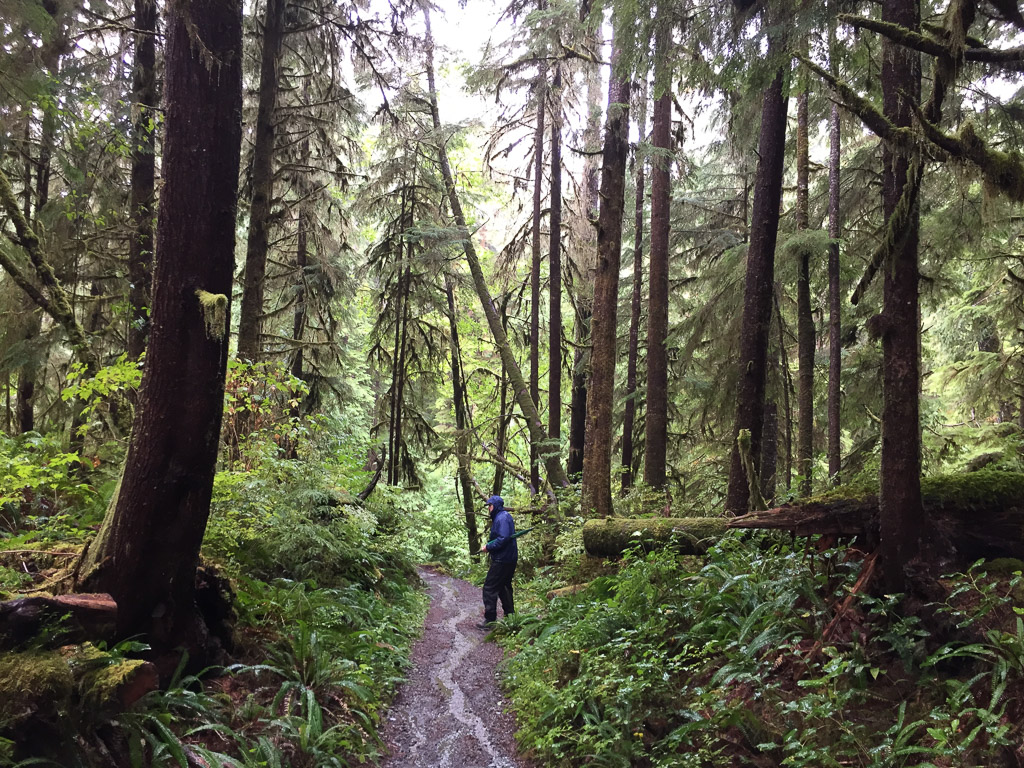 The forest was just beautiful.
The forest was just beautiful.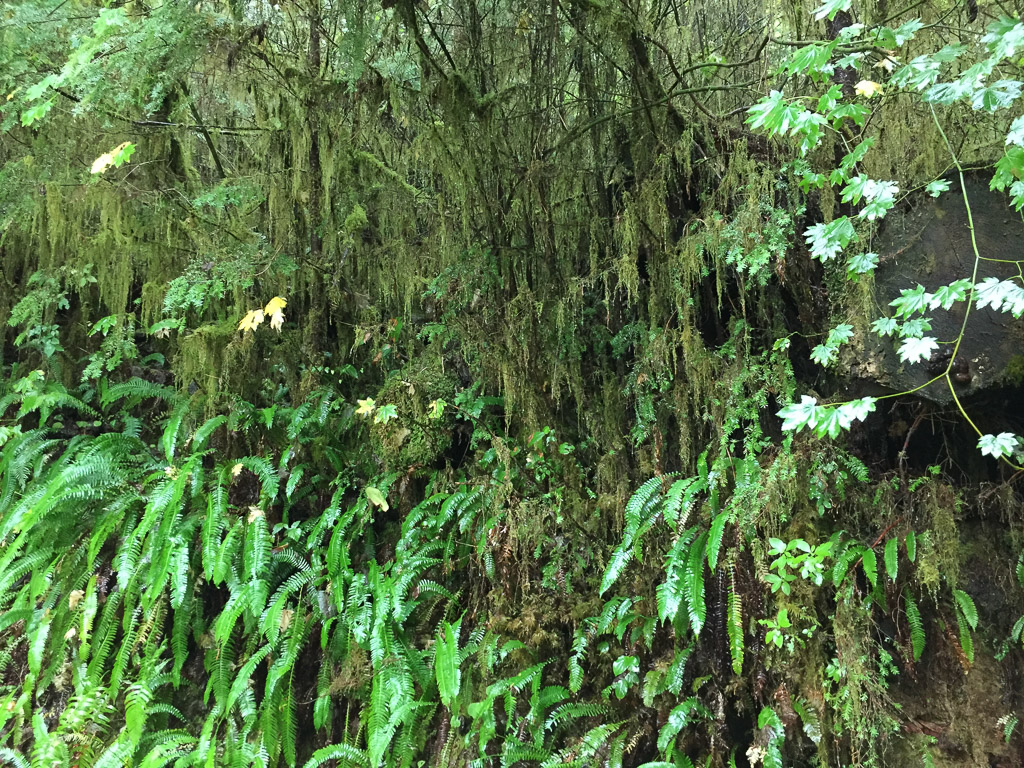
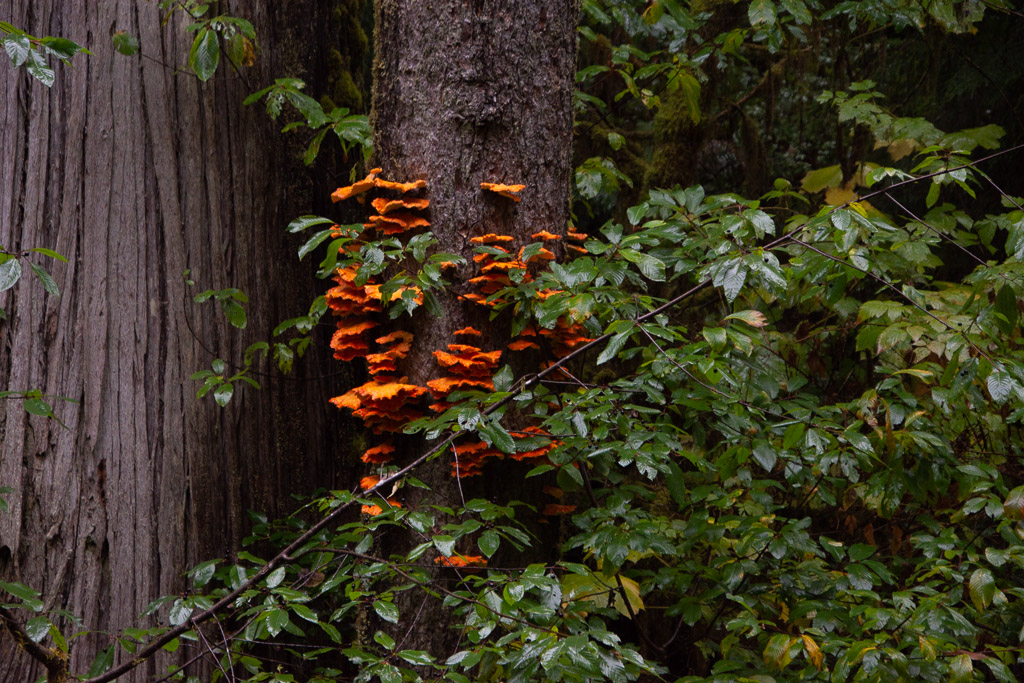 Lots of fungus in addition to the ferns, shrubs, and trees.
Lots of fungus in addition to the ferns, shrubs, and trees.
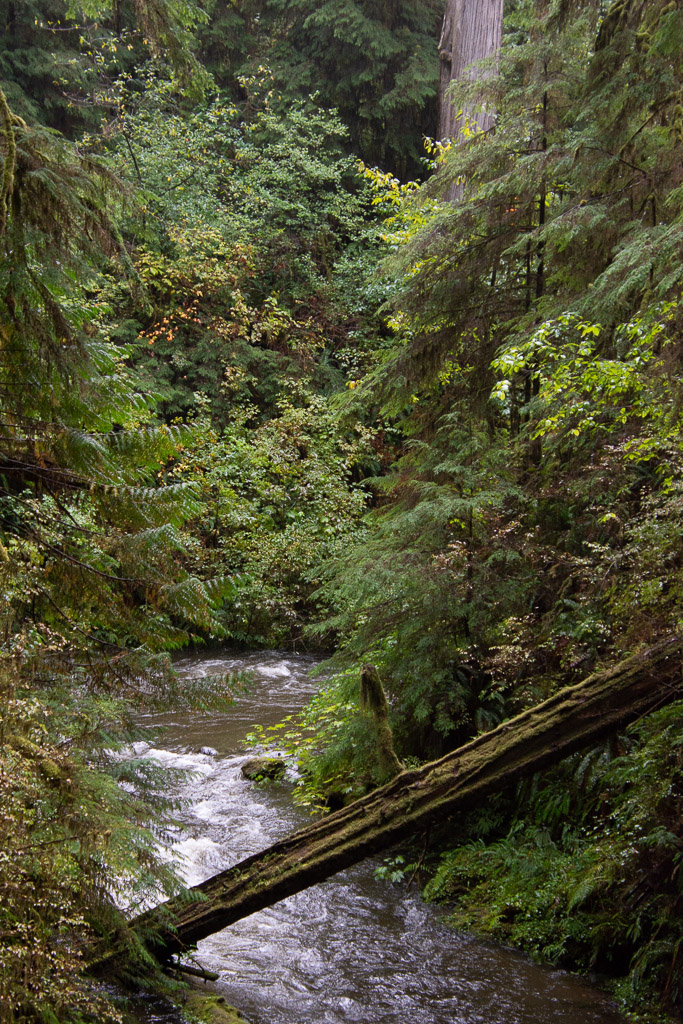
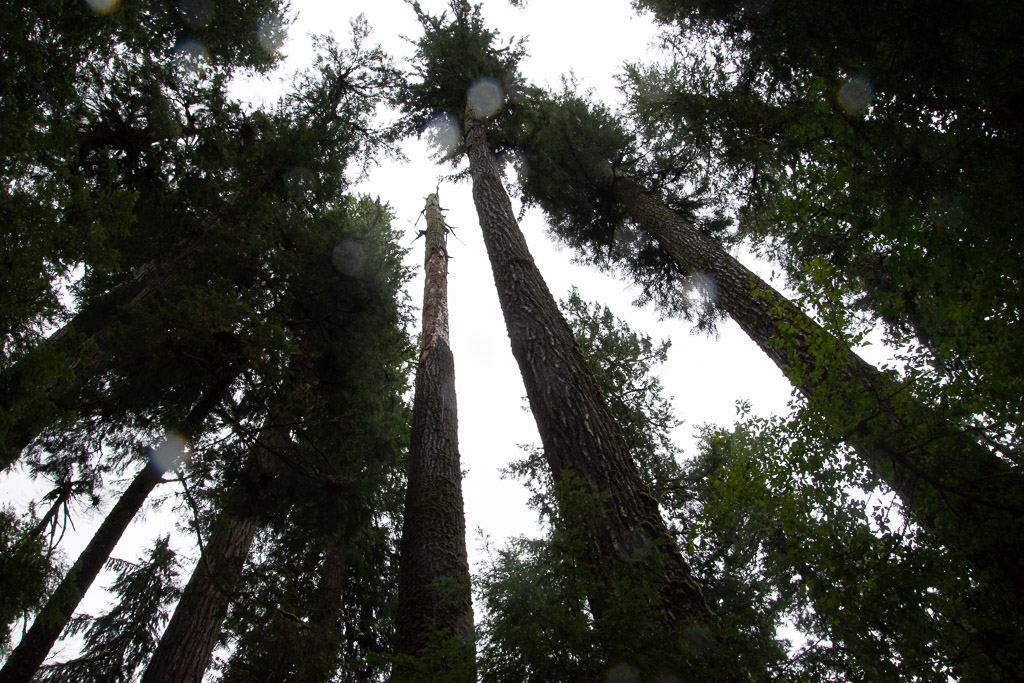
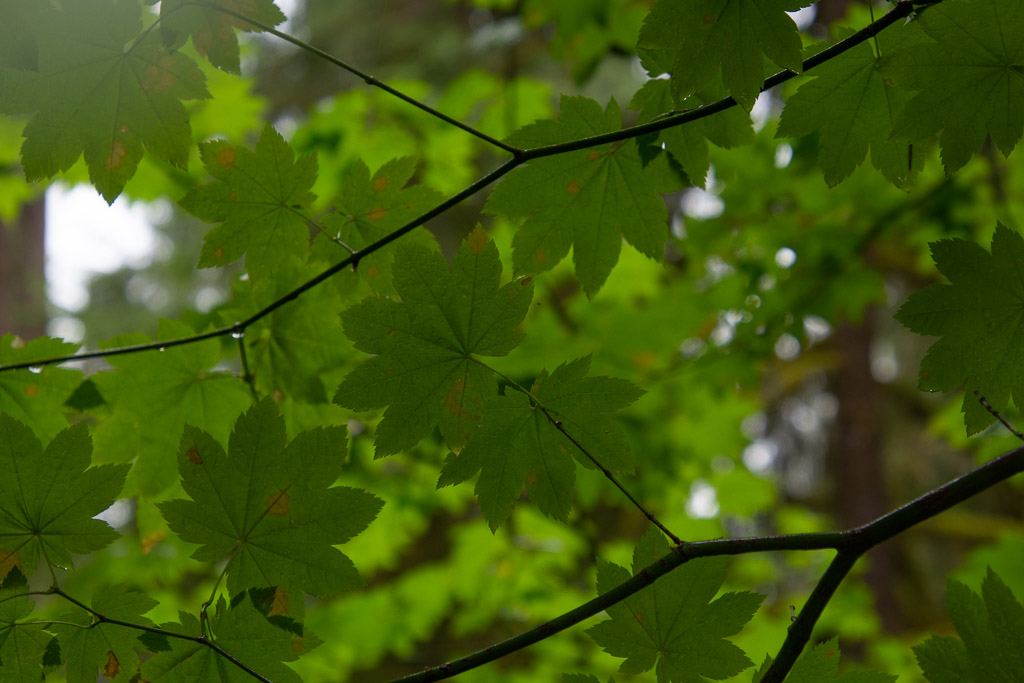
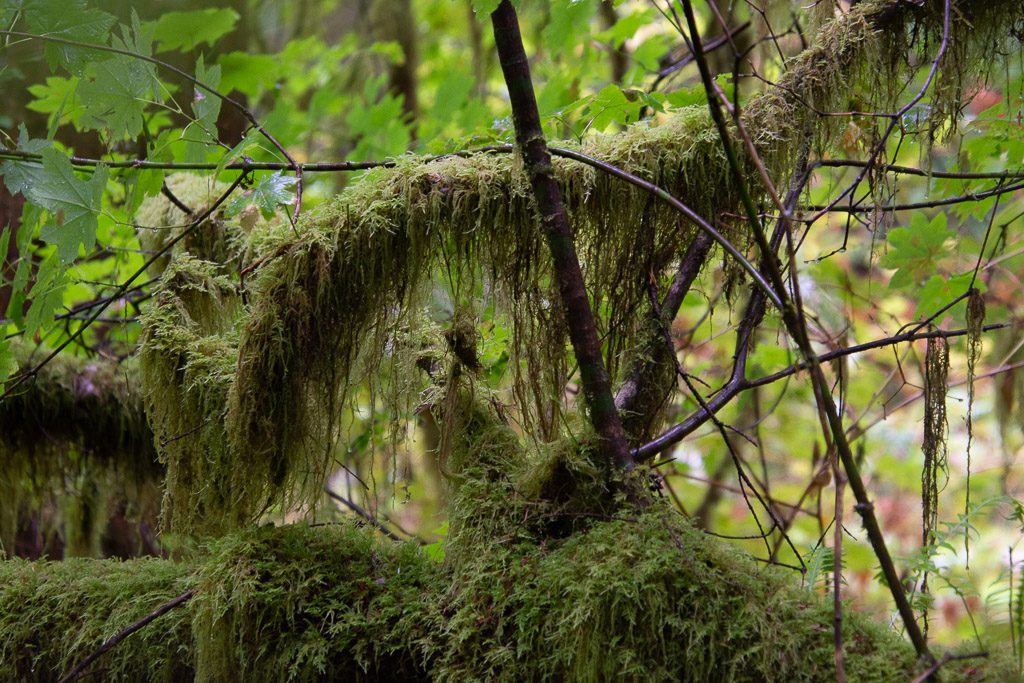 Some of these photos were taken on the trails to Falls Creek and Gatton Creek waterfalls on creeks that flow into the lake. The next stop was at the World's Largest Spruce Tree.
Some of these photos were taken on the trails to Falls Creek and Gatton Creek waterfalls on creeks that flow into the lake. The next stop was at the World's Largest Spruce Tree.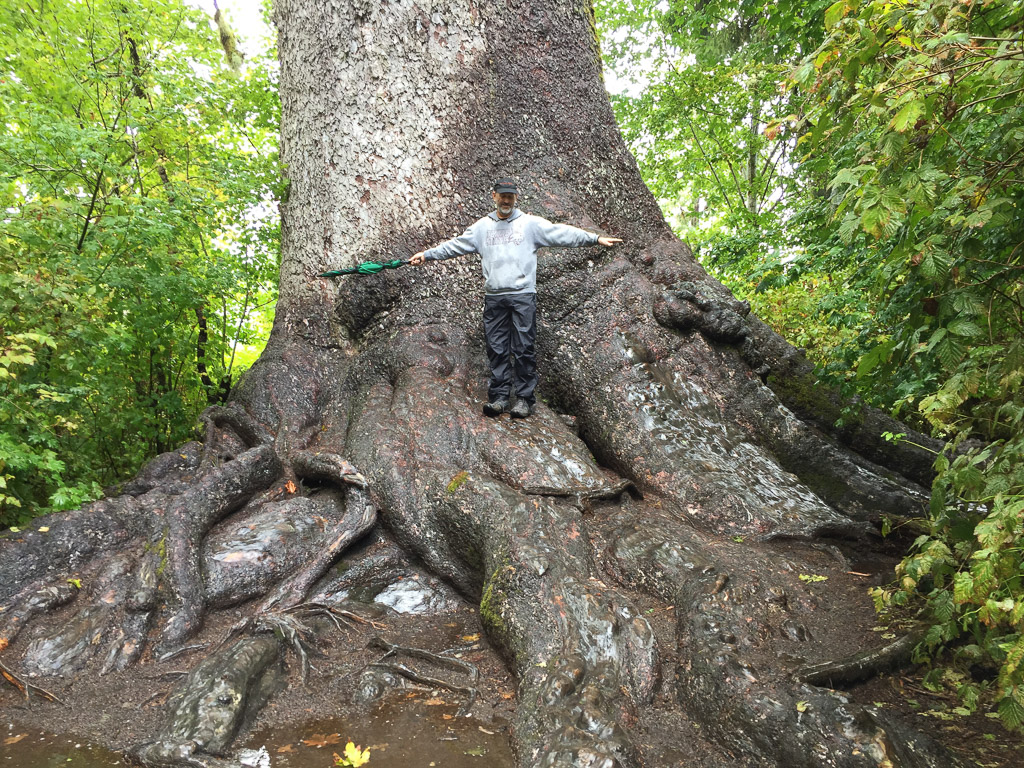 This Stika spruce is 58', 11" in circumference and 1000 years old.
This Stika spruce is 58', 11" in circumference and 1000 years old.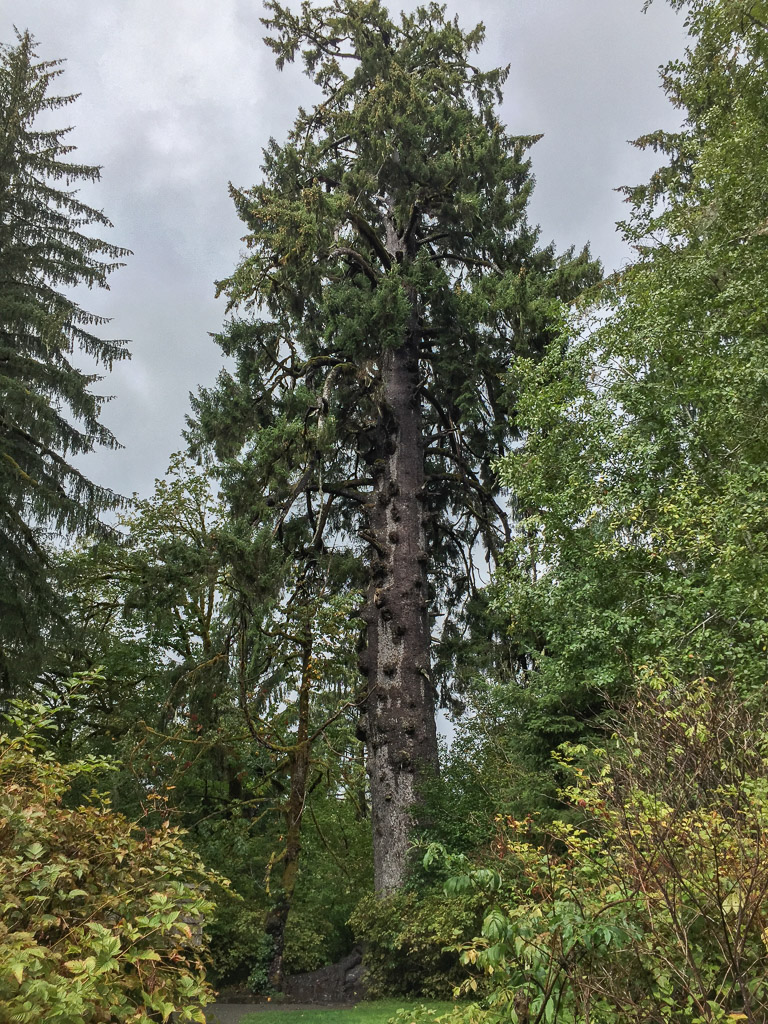 It is 191' tall and is one of six record breaking trees in the Park.
It is 191' tall and is one of six record breaking trees in the Park.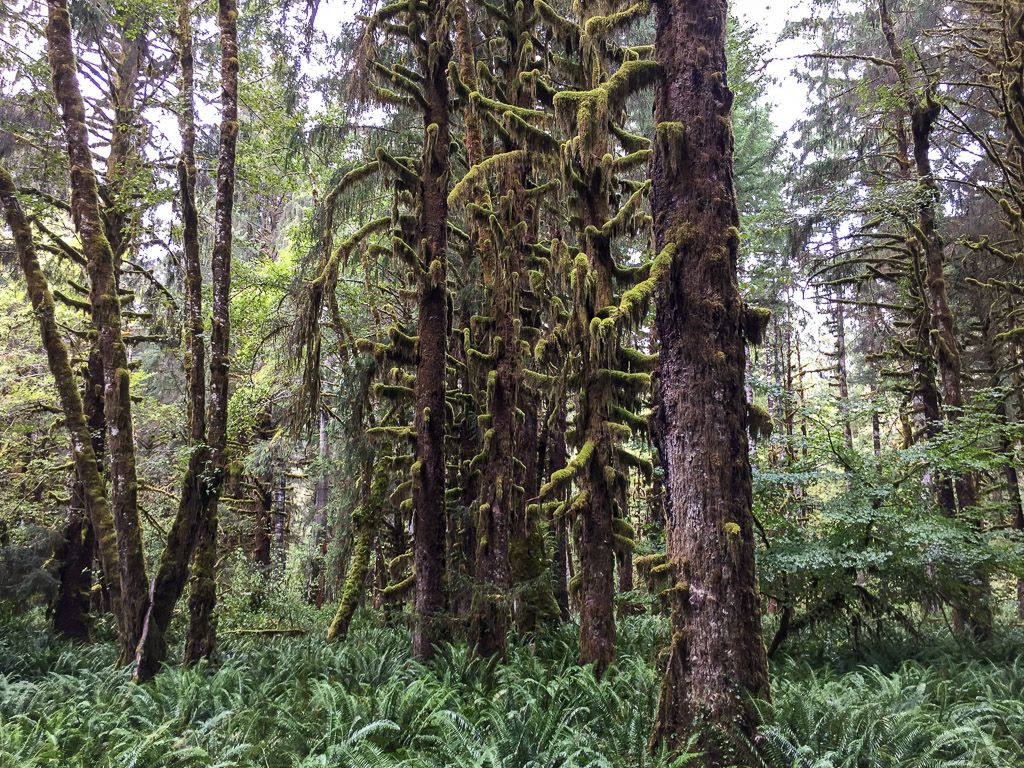 Sulightn was coming through the clouds as we drove down the road on the north side of the Quinault River.
Sulightn was coming through the clouds as we drove down the road on the north side of the Quinault River.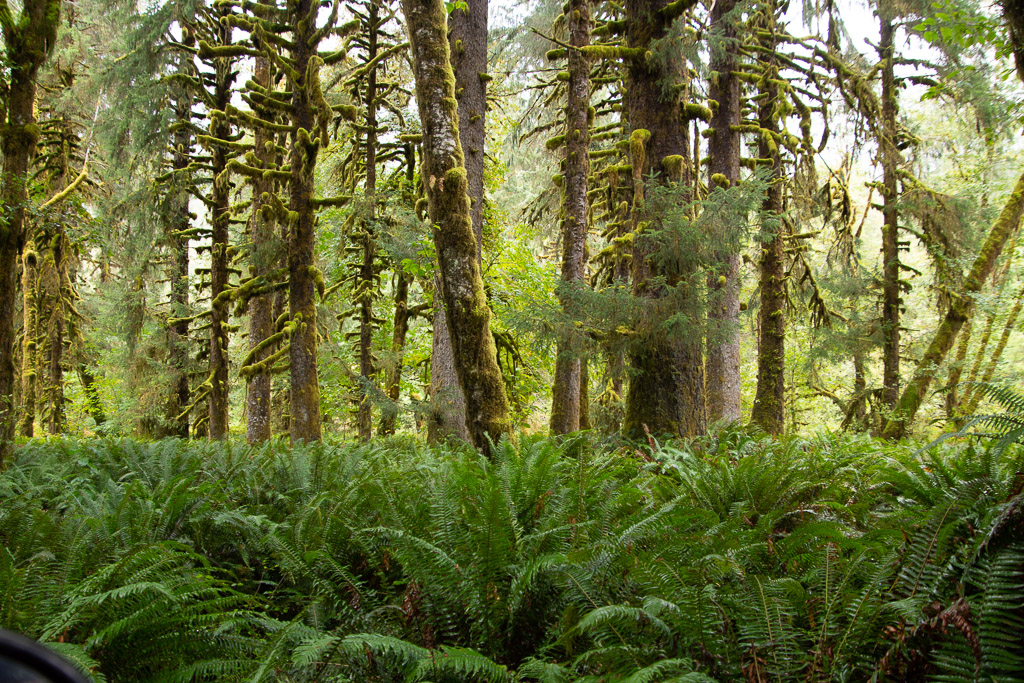 It gave a special glow to the moss covered trees in the flatland along the river.
It gave a special glow to the moss covered trees in the flatland along the river.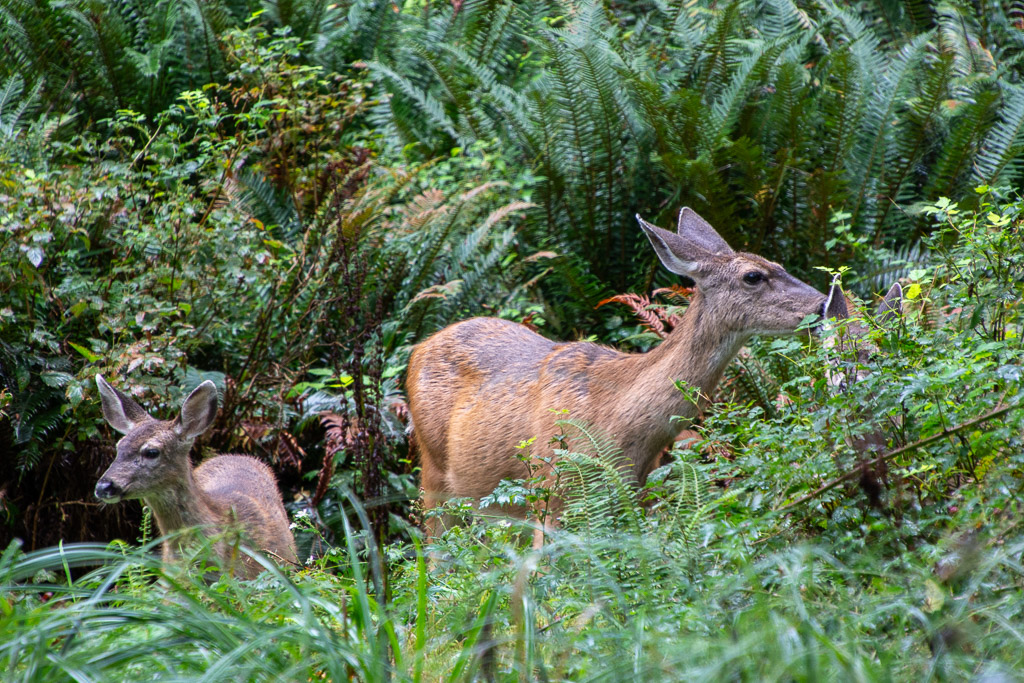 A wildlife shot of something other than a banana slug! Can you see the second fawn? I didn't even see it until I was looking through my photos.
A wildlife shot of something other than a banana slug! Can you see the second fawn? I didn't even see it until I was looking through my photos.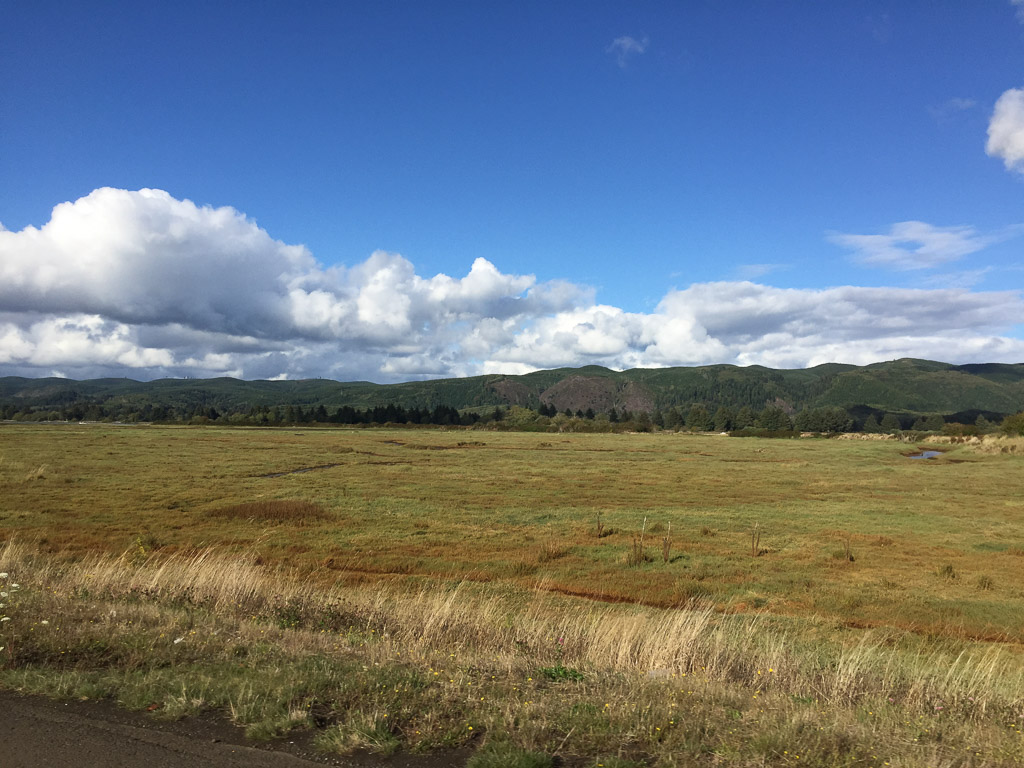 We left the rain forest and the Park and headed for the southwest corner of Washington and Cape Disappointment State Park where we hoped to spend the night.
We left the rain forest and the Park and headed for the southwest corner of Washington and Cape Disappointment State Park where we hoped to spend the night. 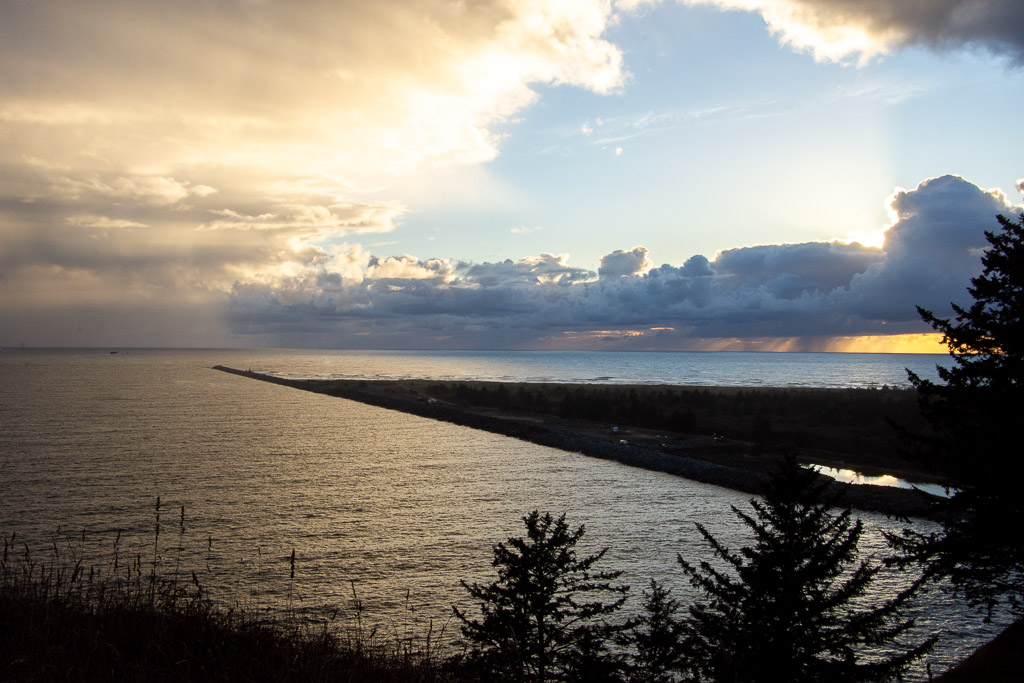 There were campsites available so we reserved one and then walked took one of the Park trails that follows the coastline to one of two lighthouses in the Park. This is the breakwater constructed on the north of where the Columbia River flows into the Pacific.
There were campsites available so we reserved one and then walked took one of the Park trails that follows the coastline to one of two lighthouses in the Park. This is the breakwater constructed on the north of where the Columbia River flows into the Pacific.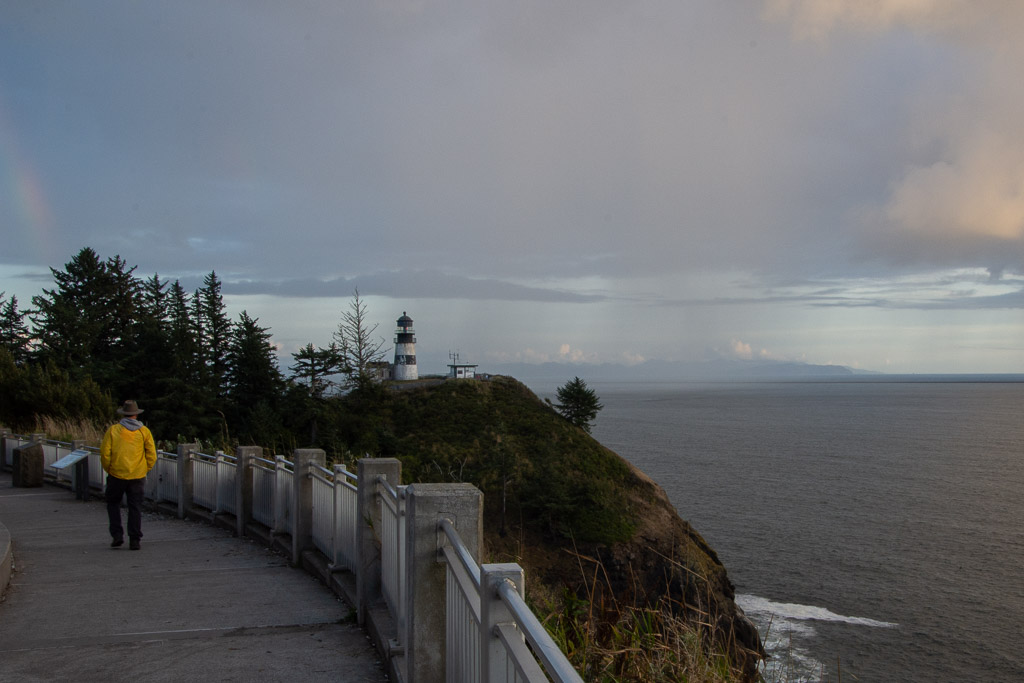 Looking south from the Lewis & Clark Interpretive Center you can see the Cape Disappointment Lighthouse and the Oregon coast in the distance, across the mouth of the Columbia River.
Looking south from the Lewis & Clark Interpretive Center you can see the Cape Disappointment Lighthouse and the Oregon coast in the distance, across the mouth of the Columbia River. 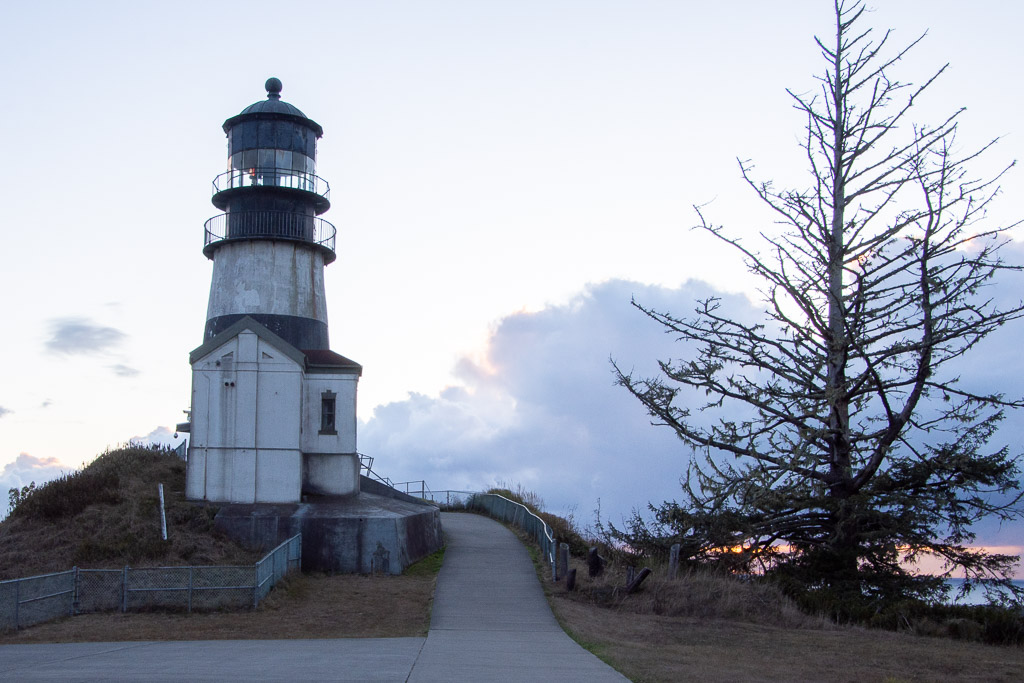 The Cape Disappointment Lighthouse was built in the 1850's. There is a Coast Guard Station nearby. According to Wikipedia: "The lighthouse had several shortcomings. The fog bell was sometimes inaudible due to the roar of ocean waves. It was discontinued in 1881 and moved ... Also, the light was not visible to ships approaching from the north. This problem was corrected by building a lighthouse at North Head, two miles from Cape Disappointment. The first-order lens was moved to North Head ... The lighthouse was electrified in 1937. In 1956, the Coast Guard intended to close the station, but retained the light when the Columbia River bar pilots protested. The light was automated in 1973. An observation deck has been built for the Coast Guard to monitor traffic and bar conditions."
The Cape Disappointment Lighthouse was built in the 1850's. There is a Coast Guard Station nearby. According to Wikipedia: "The lighthouse had several shortcomings. The fog bell was sometimes inaudible due to the roar of ocean waves. It was discontinued in 1881 and moved ... Also, the light was not visible to ships approaching from the north. This problem was corrected by building a lighthouse at North Head, two miles from Cape Disappointment. The first-order lens was moved to North Head ... The lighthouse was electrified in 1937. In 1956, the Coast Guard intended to close the station, but retained the light when the Columbia River bar pilots protested. The light was automated in 1973. An observation deck has been built for the Coast Guard to monitor traffic and bar conditions."
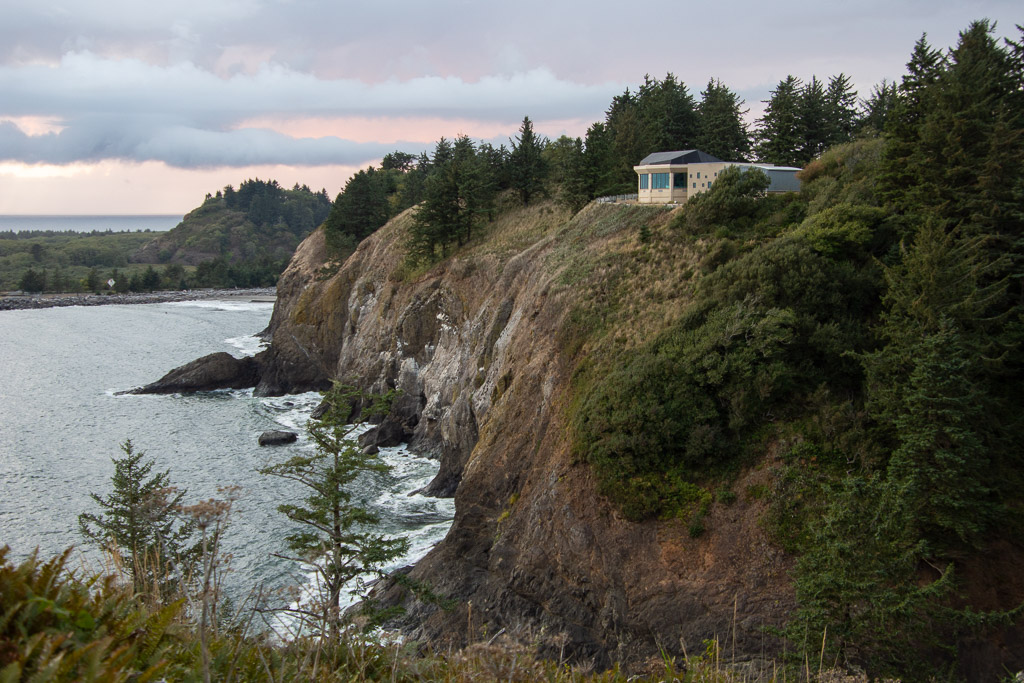 This is the view looking back north to the Interpretive Center (which we visited the next day). Also visible is the small cove called Waikiki Beach. The campsites were beyond that. We got back to camp about dark, our usual M.O., and ate an unexciting dinner, and went to bed.
This is the view looking back north to the Interpretive Center (which we visited the next day). Also visible is the small cove called Waikiki Beach. The campsites were beyond that. We got back to camp about dark, our usual M.O., and ate an unexciting dinner, and went to bed.

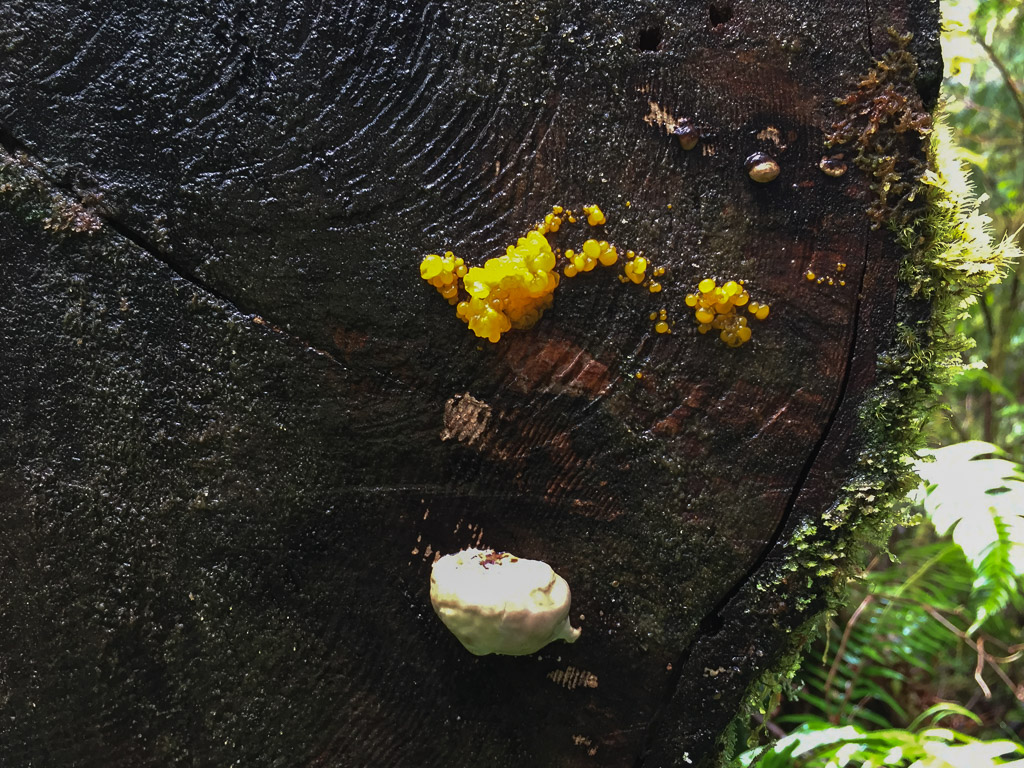
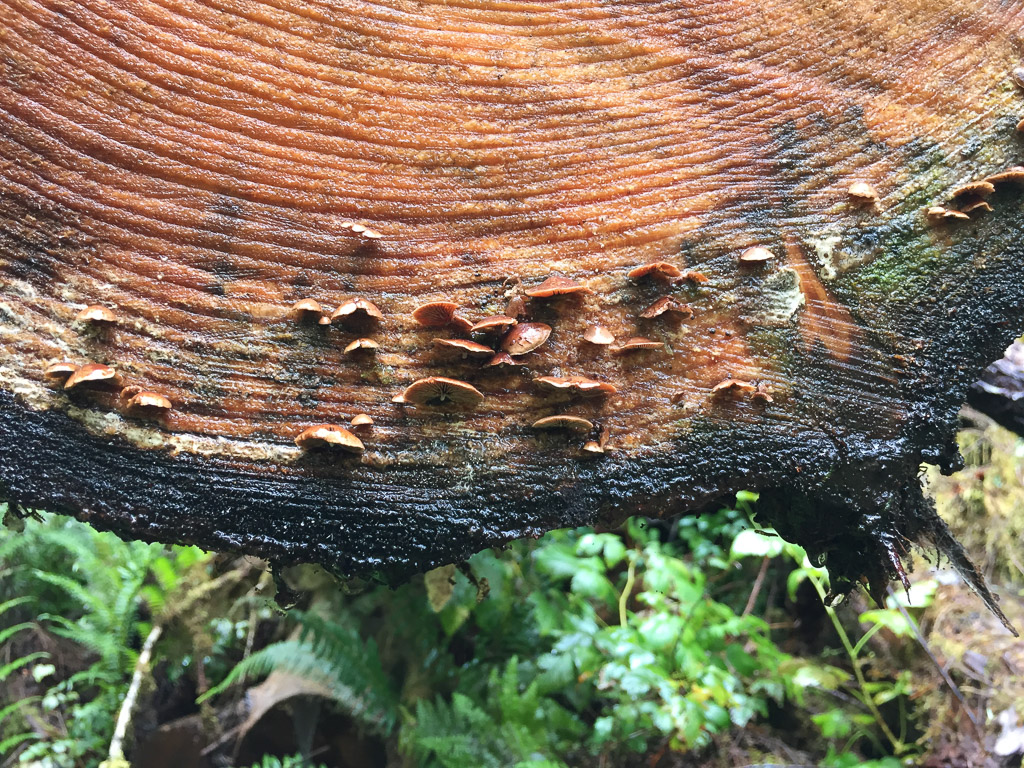
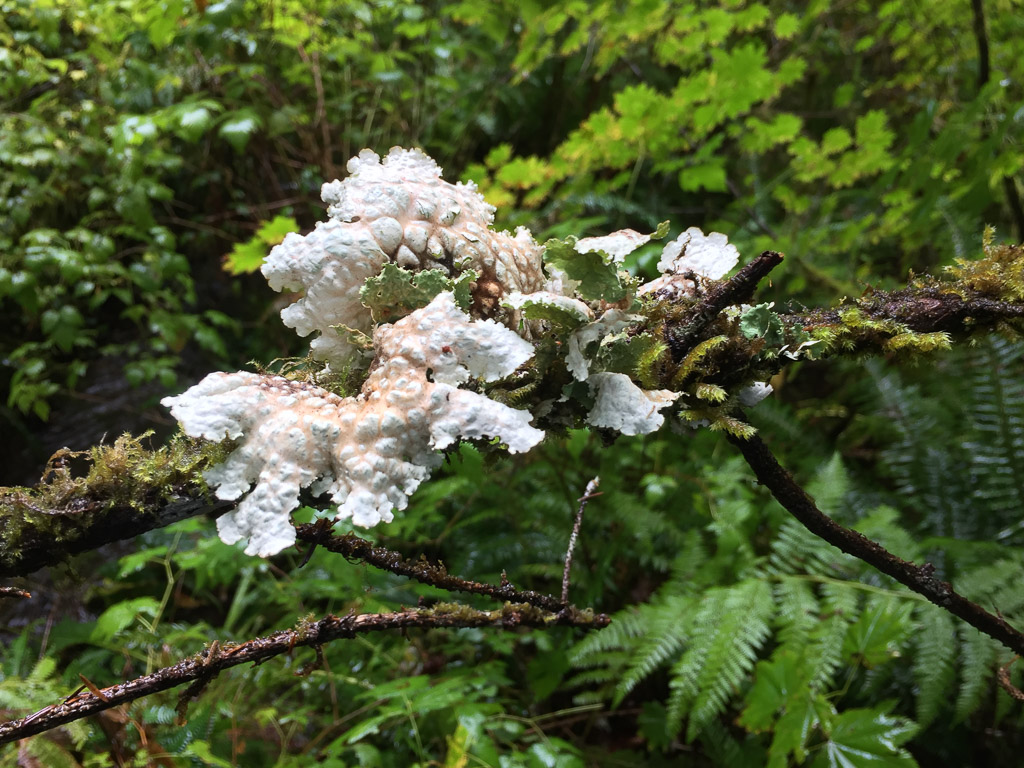
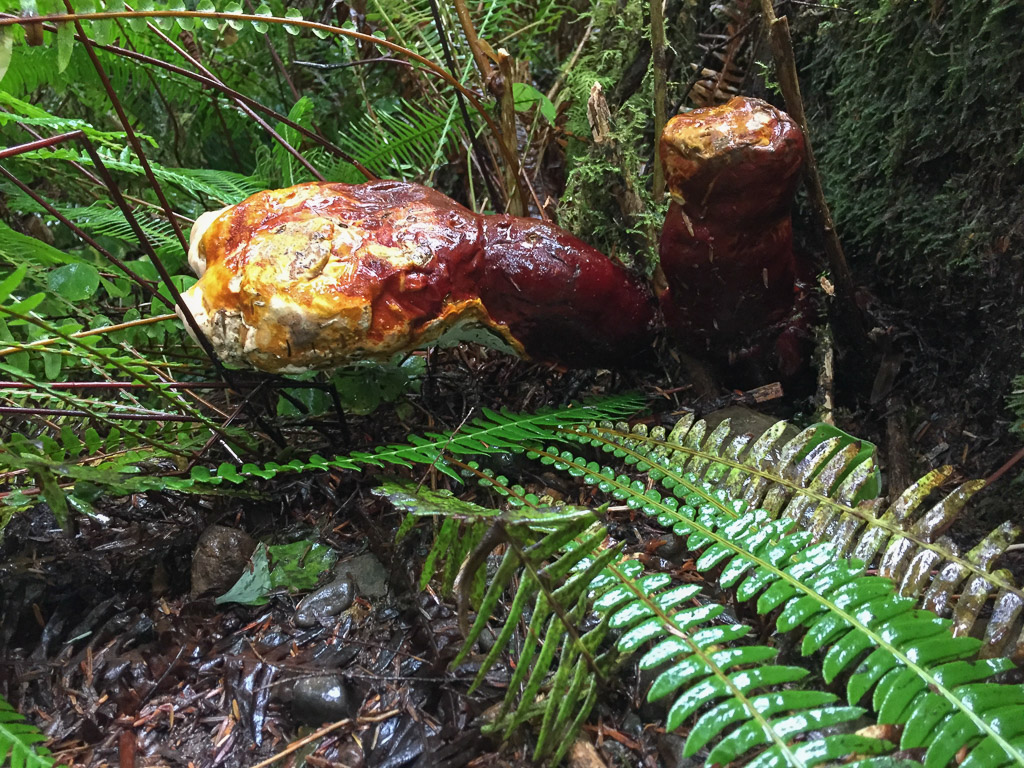
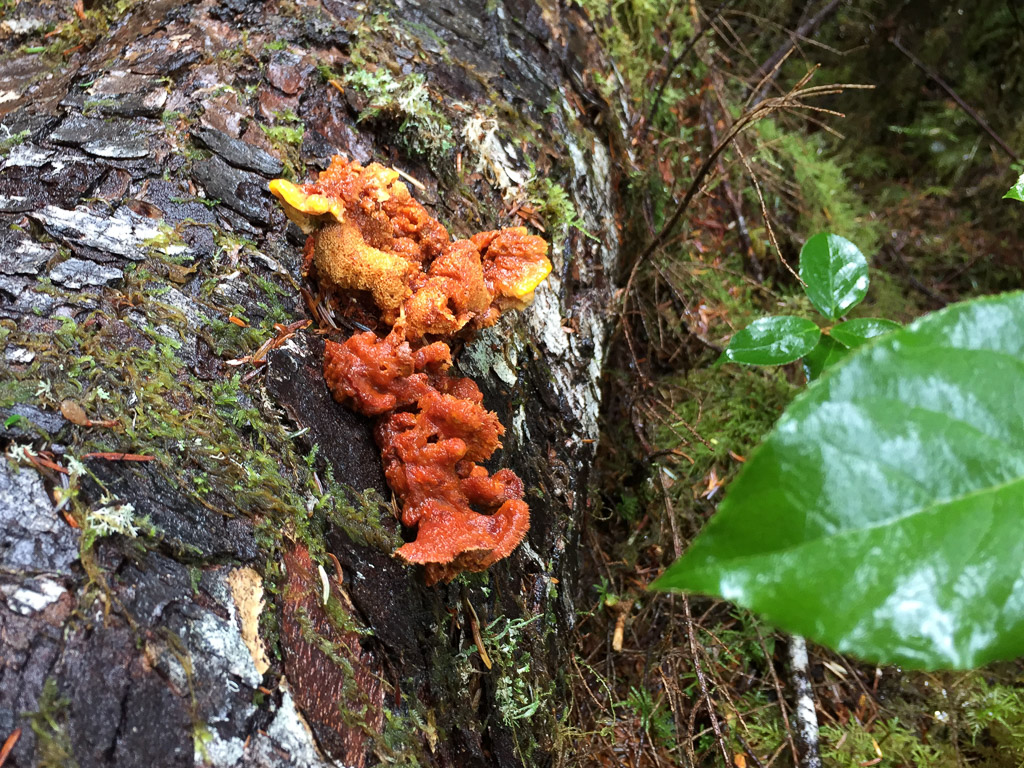
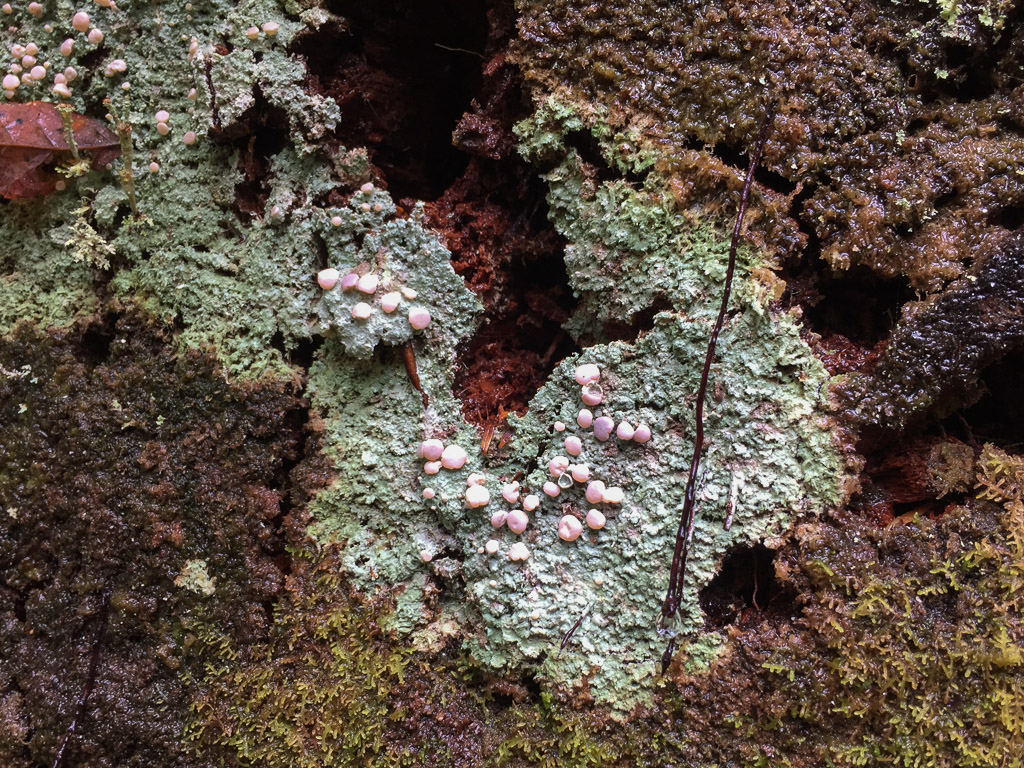
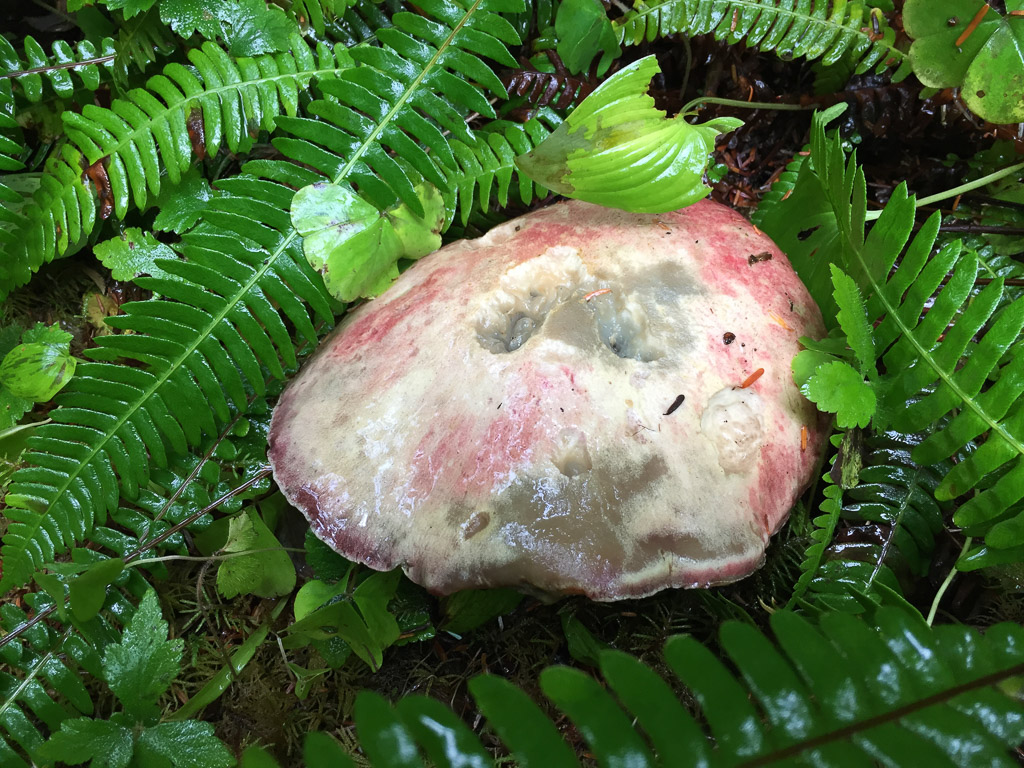
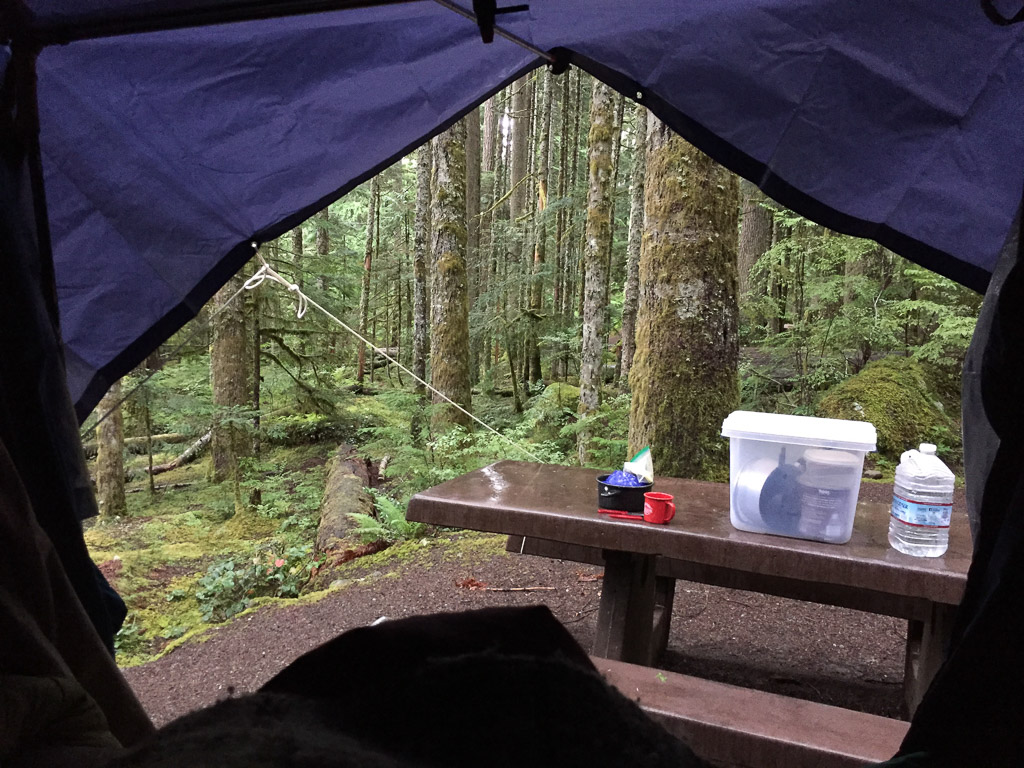 Here is the view from my sleeping bag the next morning.
Here is the view from my sleeping bag the next morning. 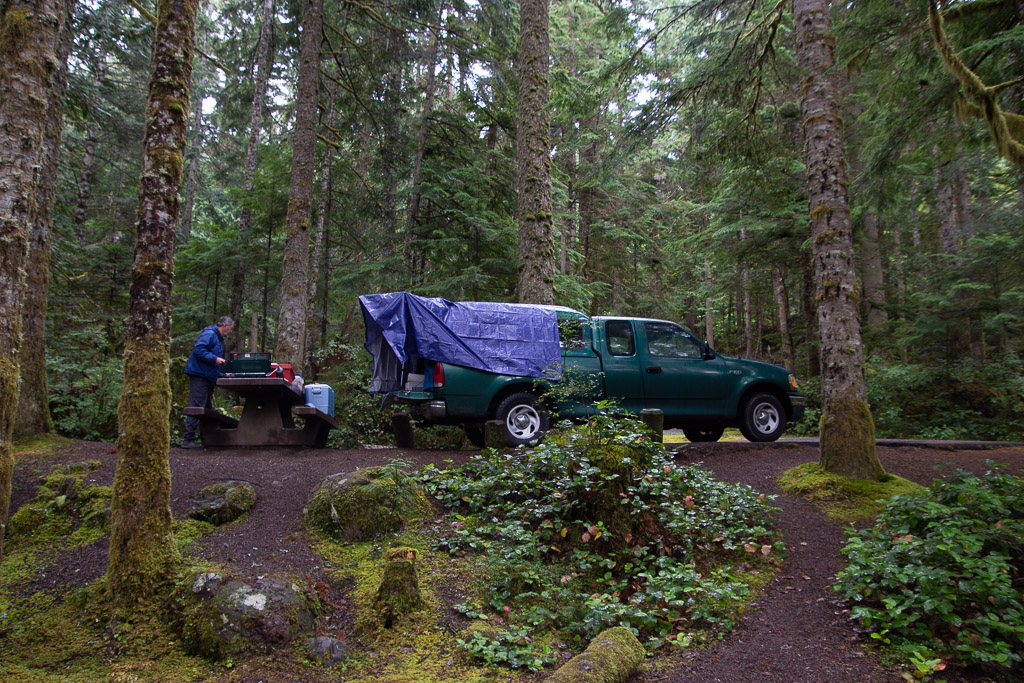 Later we wondered why we didn't buy a bigger tarp since then we could have covered the whole camper, although I wouldn't have liked not seeing out the side window. As it is there is some leakage around where the camper joins the truck bed and we had to make sure that our sleeping bags, clothes, etc didn't touch the edges or they'd soak up water.
Later we wondered why we didn't buy a bigger tarp since then we could have covered the whole camper, although I wouldn't have liked not seeing out the side window. As it is there is some leakage around where the camper joins the truck bed and we had to make sure that our sleeping bags, clothes, etc didn't touch the edges or they'd soak up water.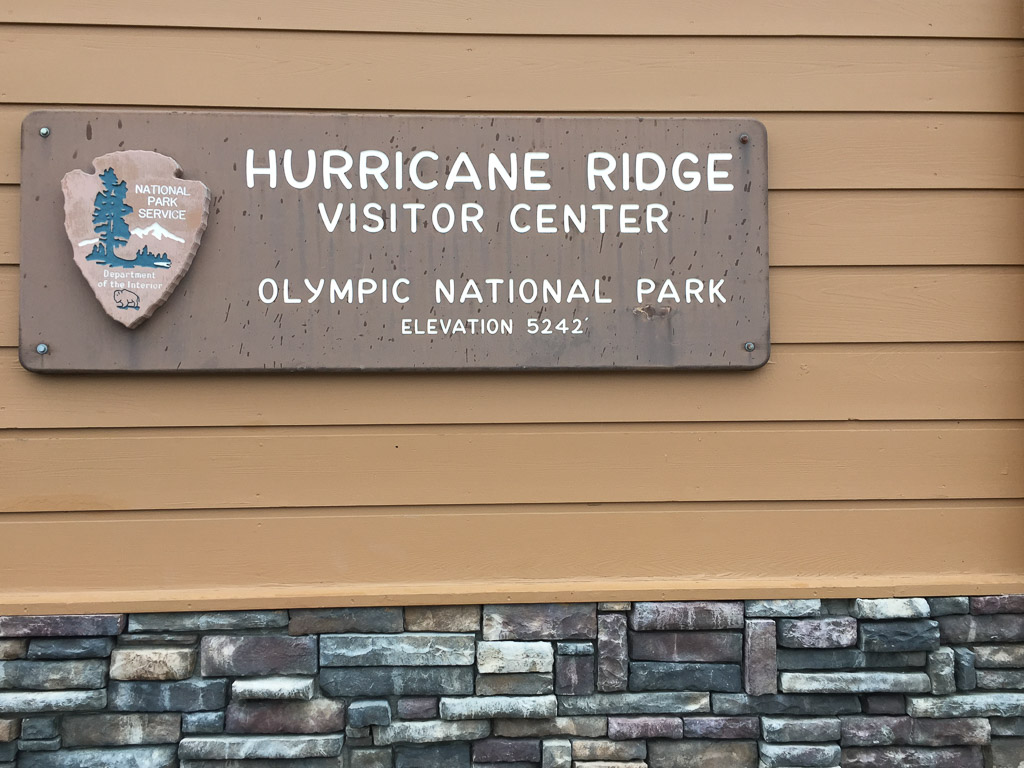 The name was a clue to the weather on the ridge.
The name was a clue to the weather on the ridge.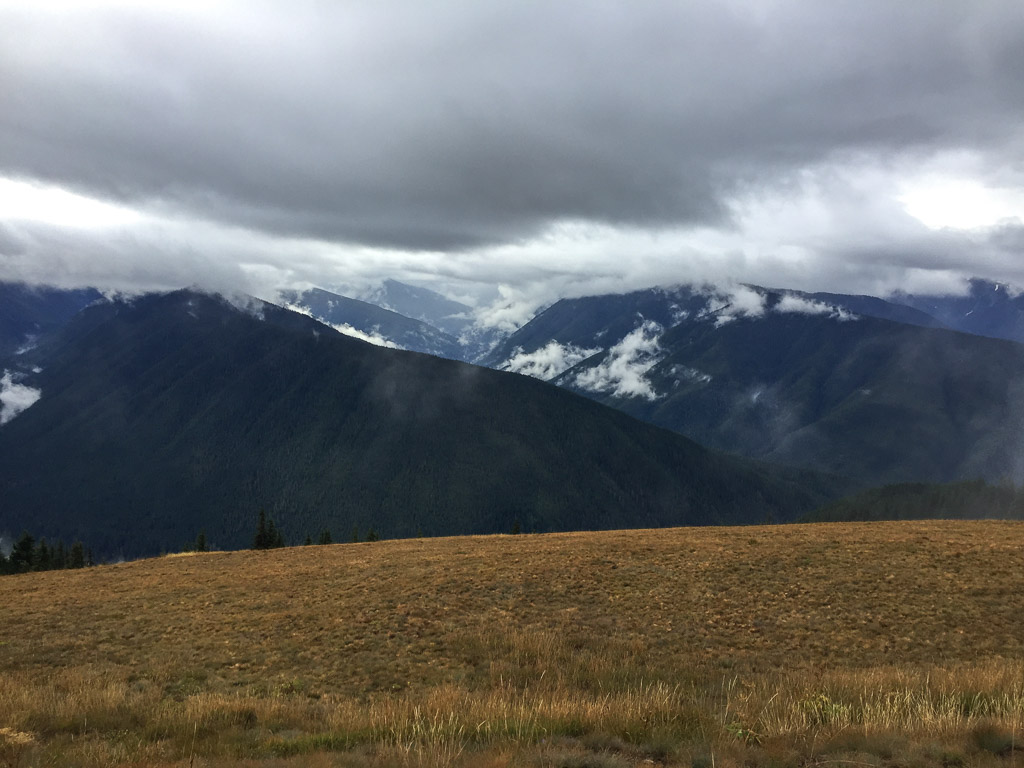 It was a wee bit
It was a wee bit 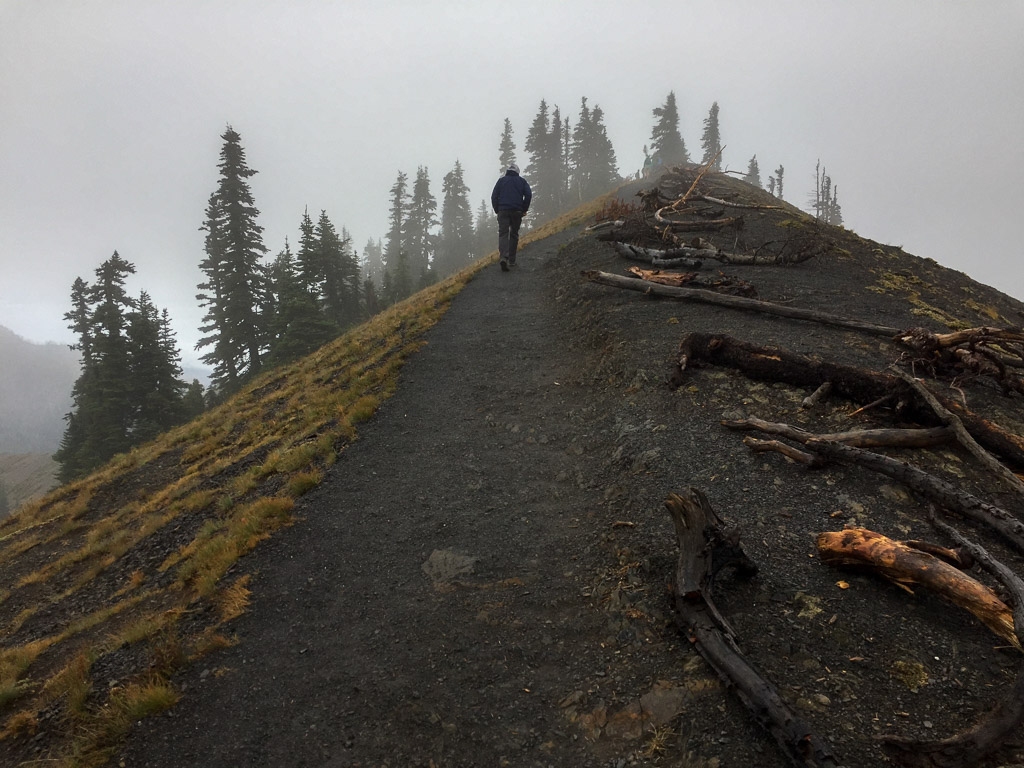 There is a trail from the Visitor Center to the top of the nearby ridge.
There is a trail from the Visitor Center to the top of the nearby ridge.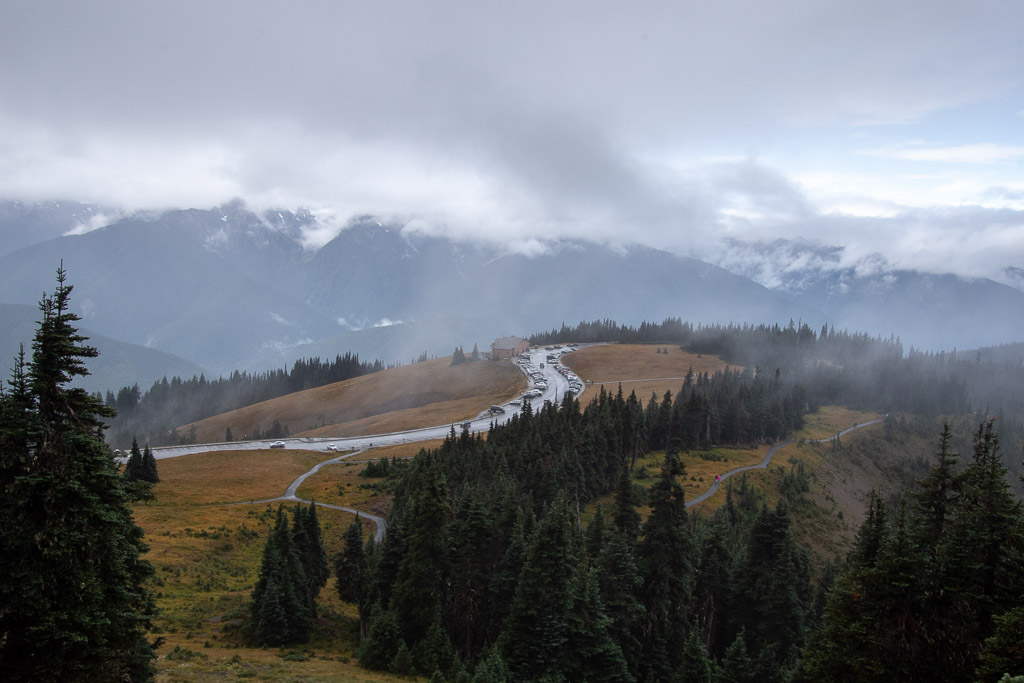 View looking down on the Visitor Center and Mt. Olympus in the clouds.
View looking down on the Visitor Center and Mt. Olympus in the clouds.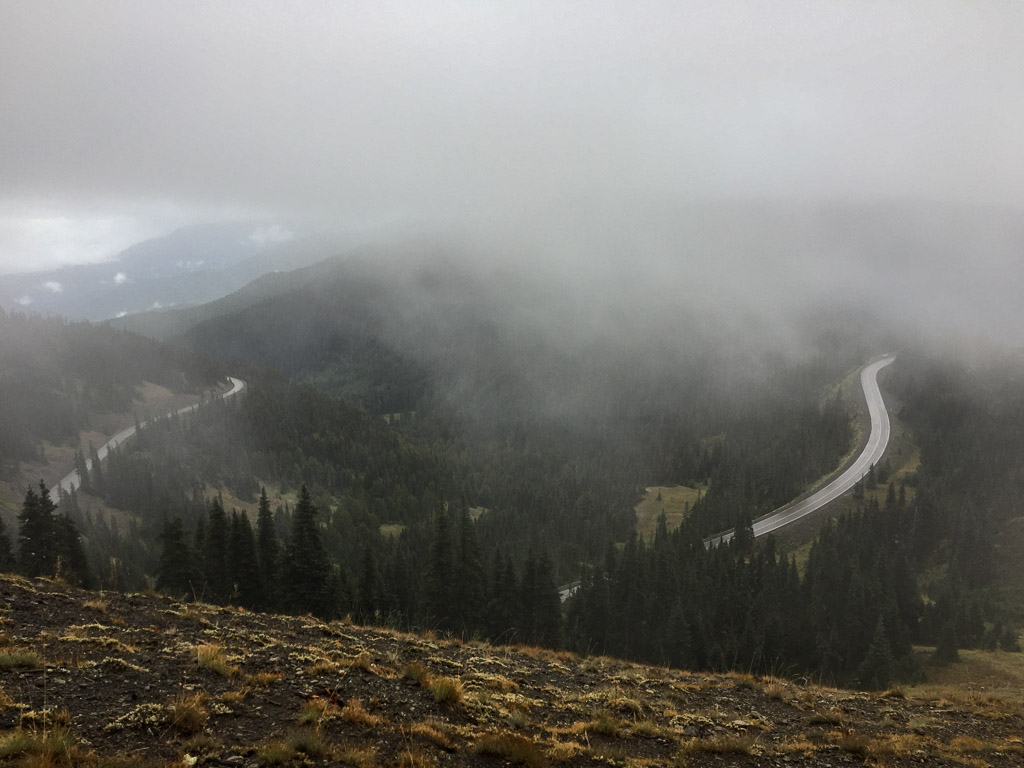 View to the other direction and the road to the Visitor Center.
View to the other direction and the road to the Visitor Center.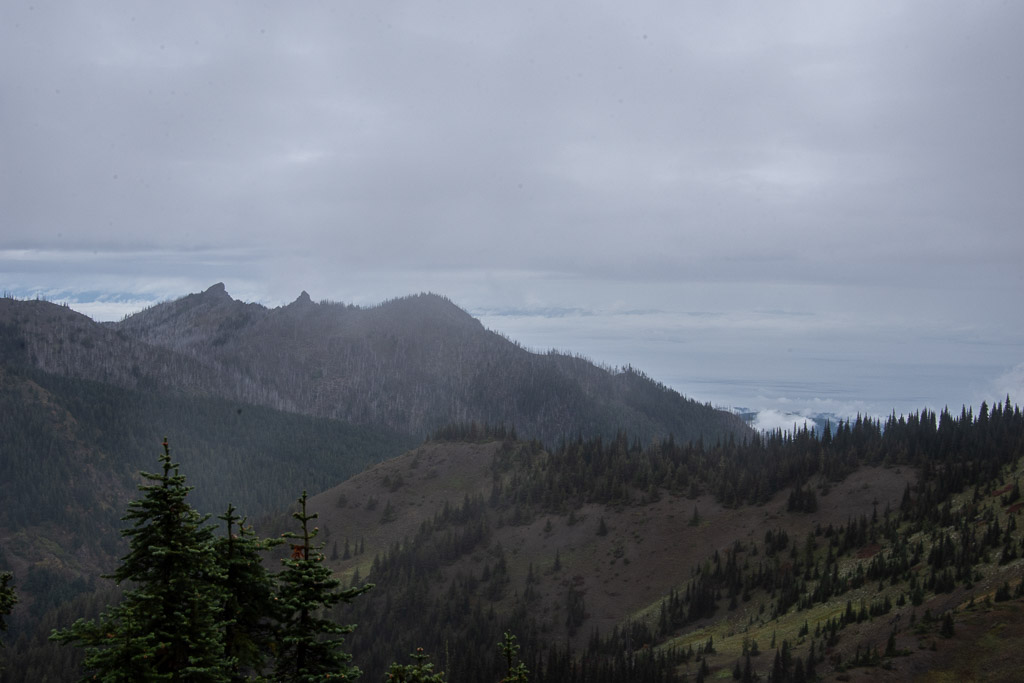 Walking along the ridge we tried to get a view of Canada. It's out there across the Strait of Juan de Fuca, but mostly in the clouds.
Walking along the ridge we tried to get a view of Canada. It's out there across the Strait of Juan de Fuca, but mostly in the clouds.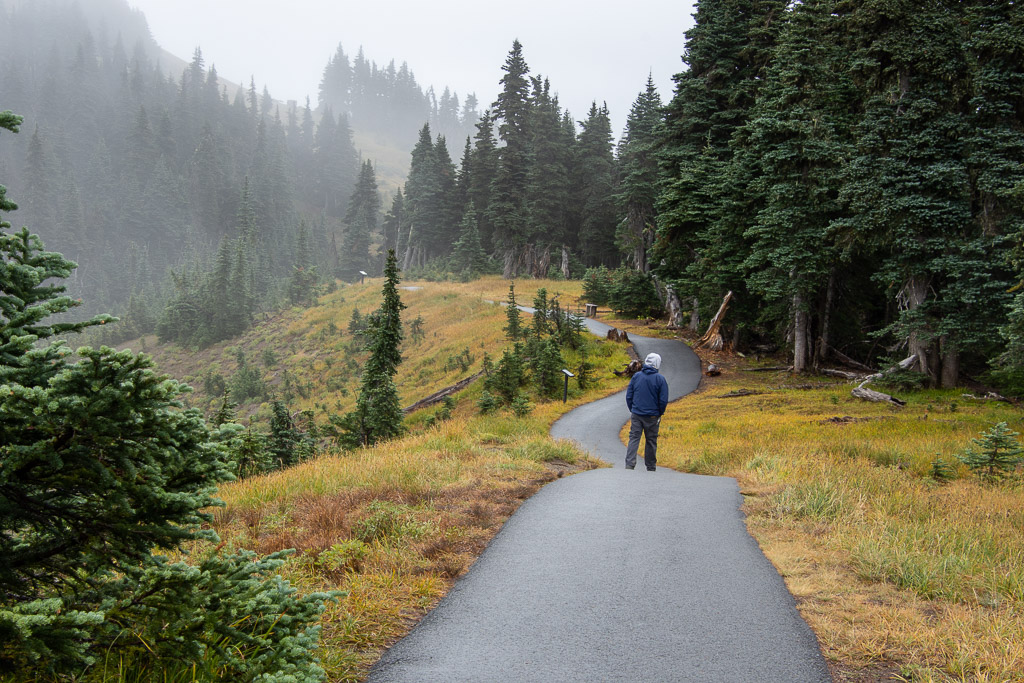 More views along the trail.
More views along the trail.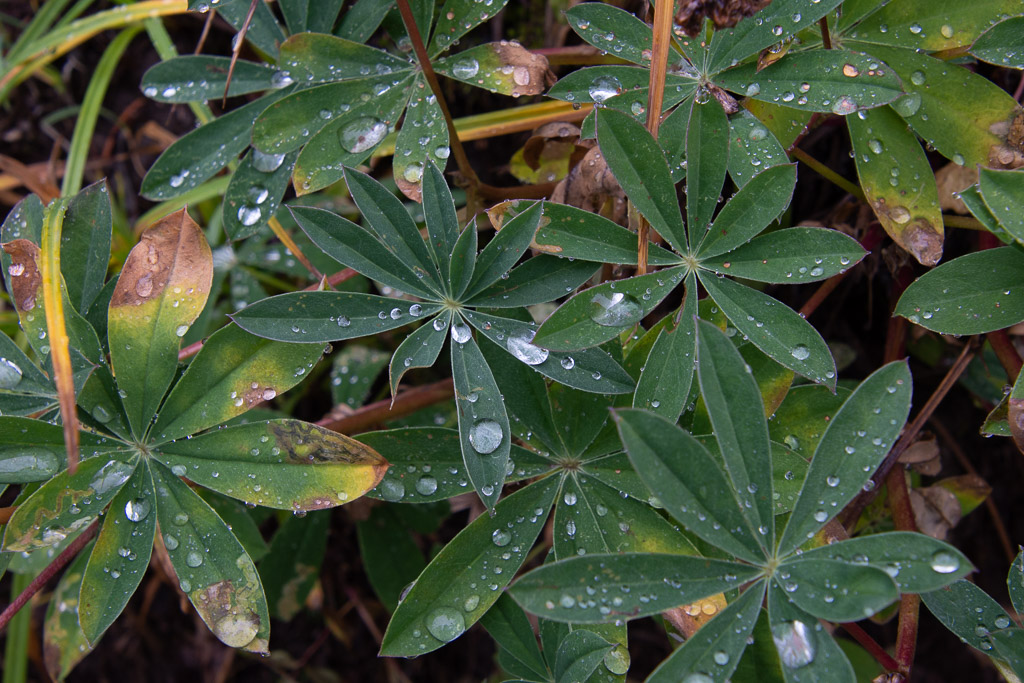
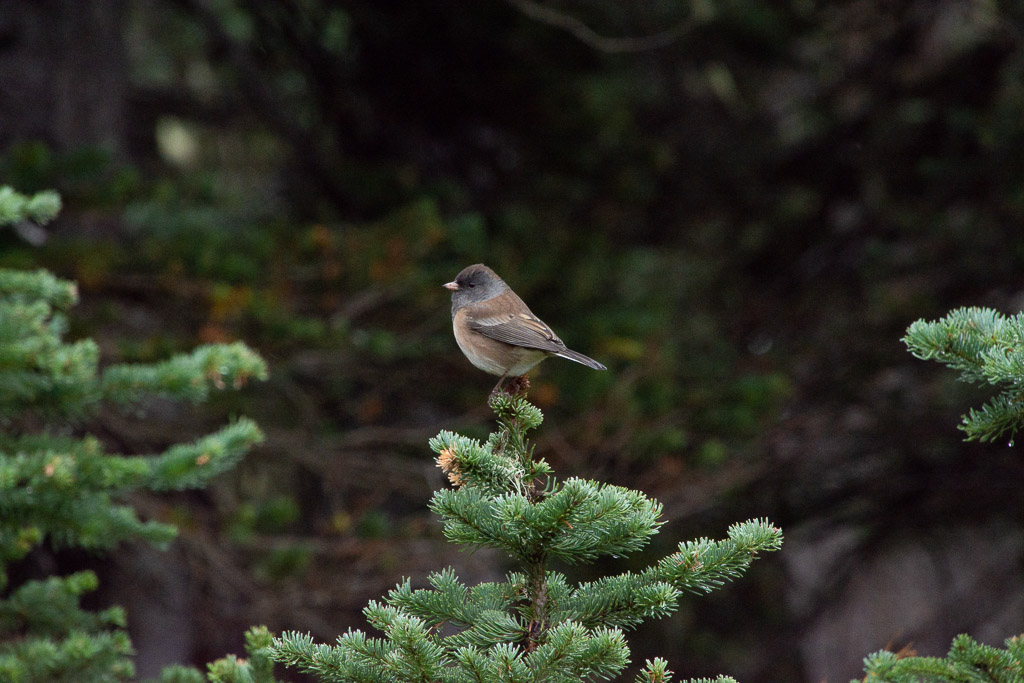
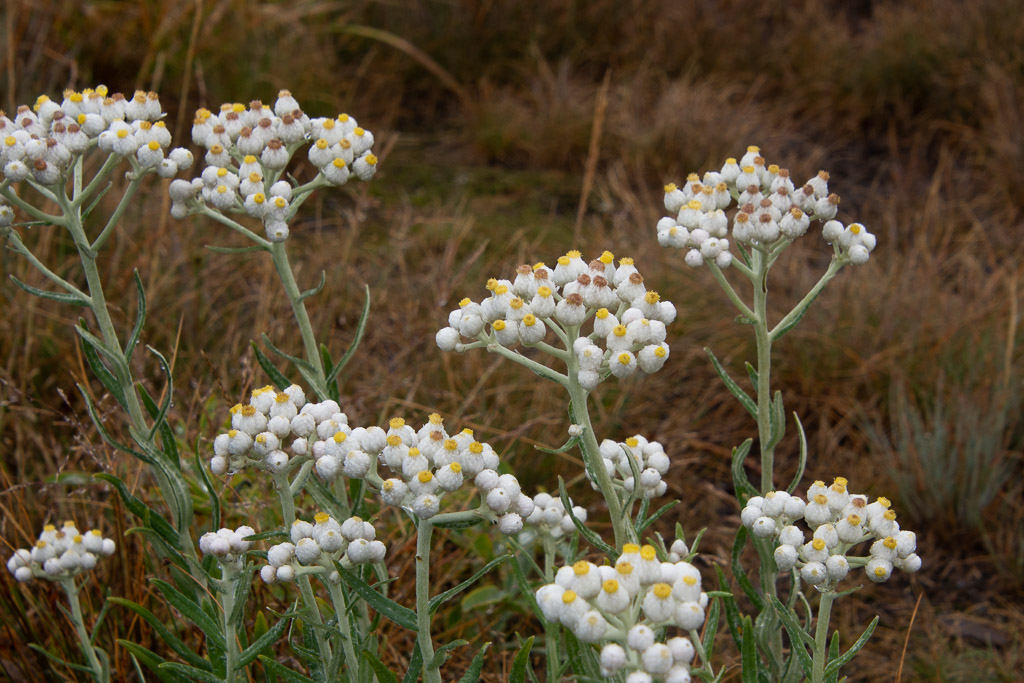 I admired these flowers blooming so late in the season. They are in the sunflower family: Pearly Everlasting.
I admired these flowers blooming so late in the season. They are in the sunflower family: Pearly Everlasting.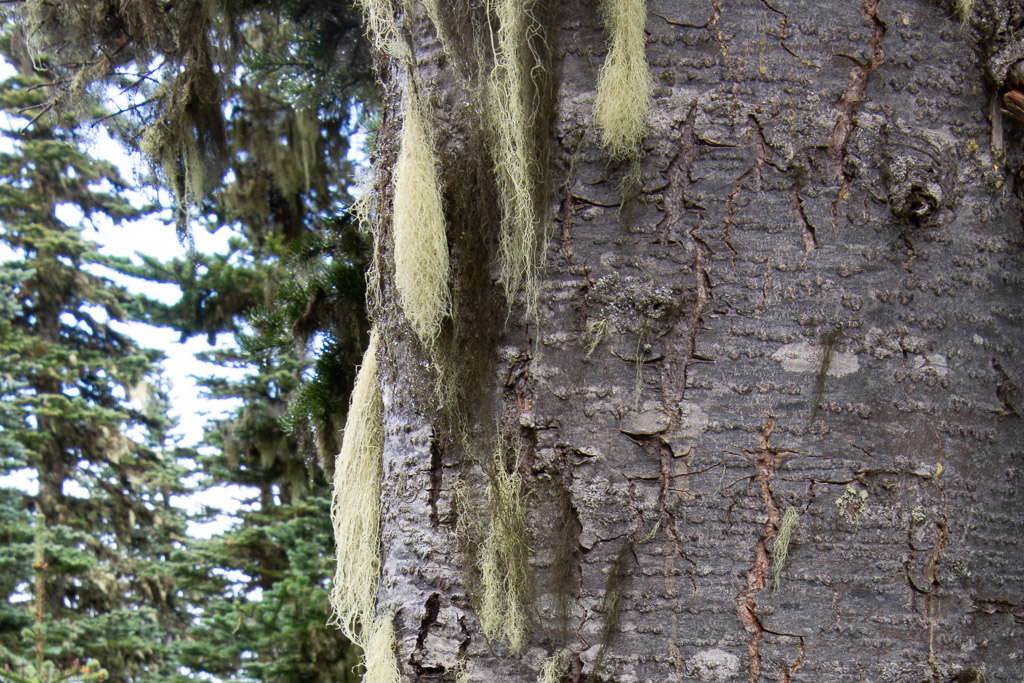 Goat's Beard lichen.
Goat's Beard lichen.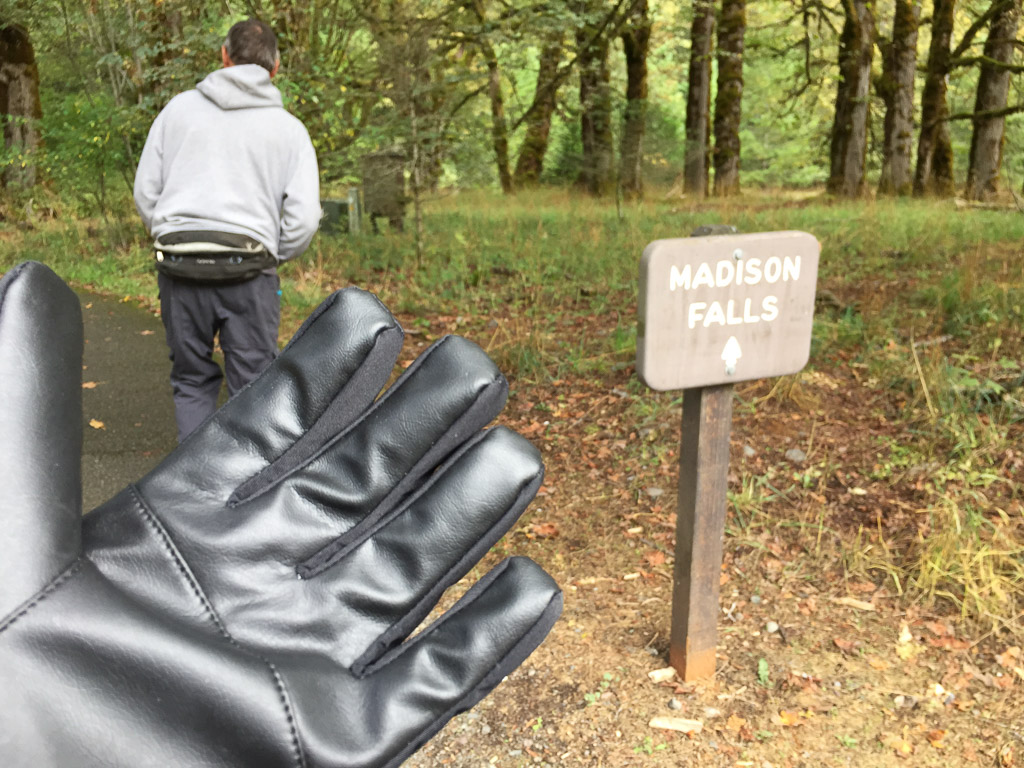 We both bought gloves. Next stop was Madison Falls at the edge of the Park near another road that follows the Elwha River.
We both bought gloves. Next stop was Madison Falls at the edge of the Park near another road that follows the Elwha River.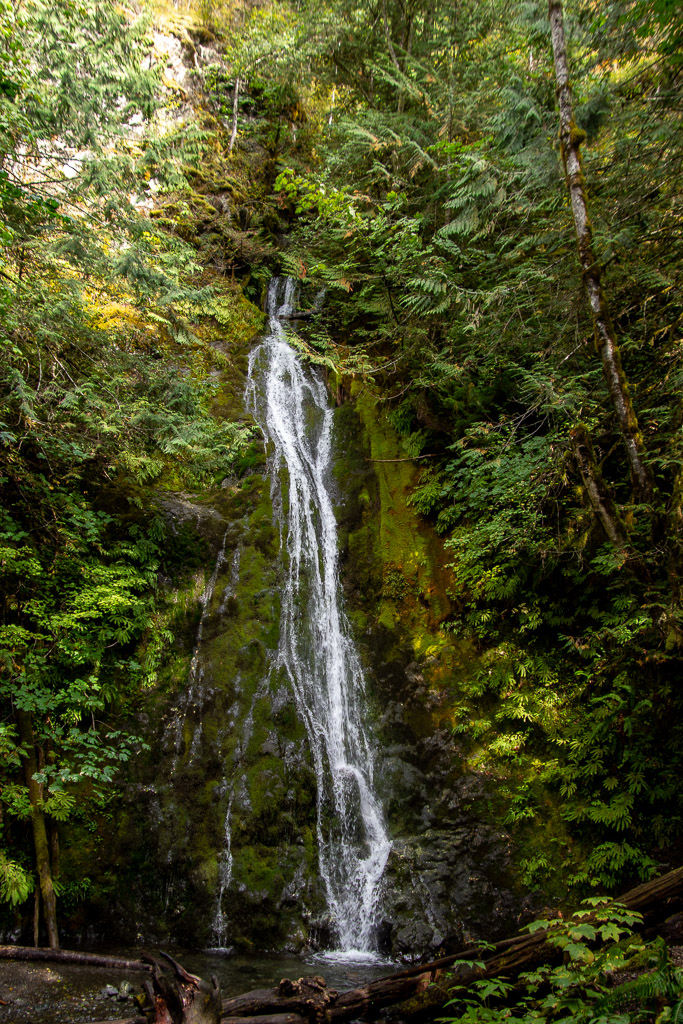 It is a short walk on a paved trail to see the falls.
It is a short walk on a paved trail to see the falls.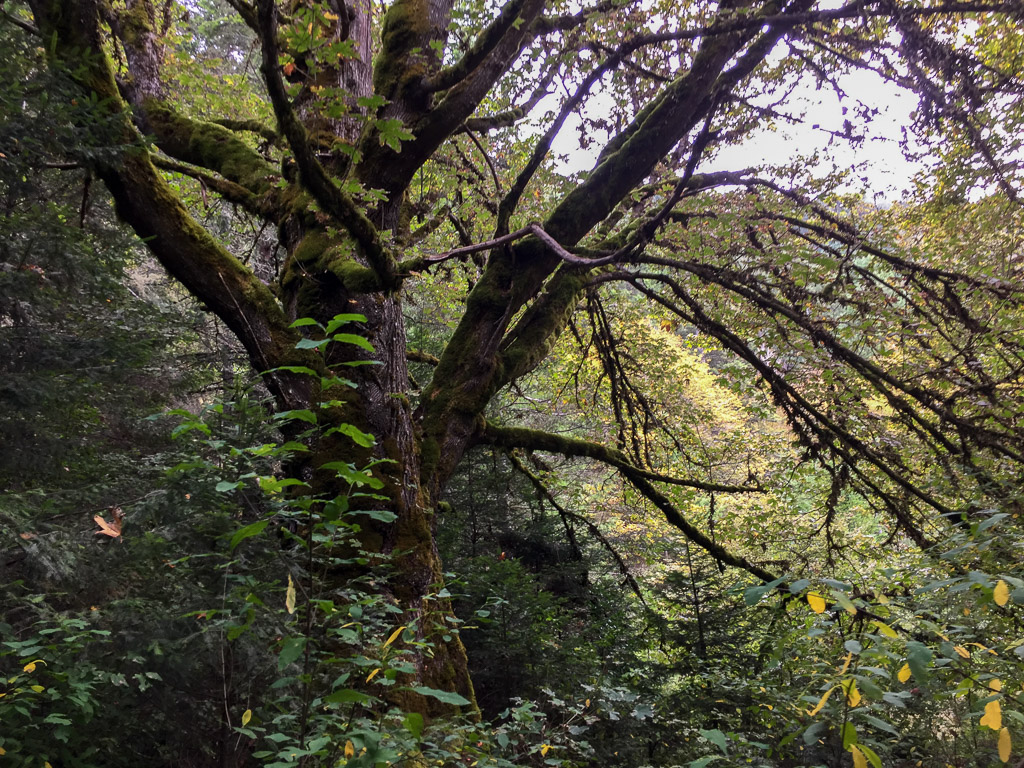
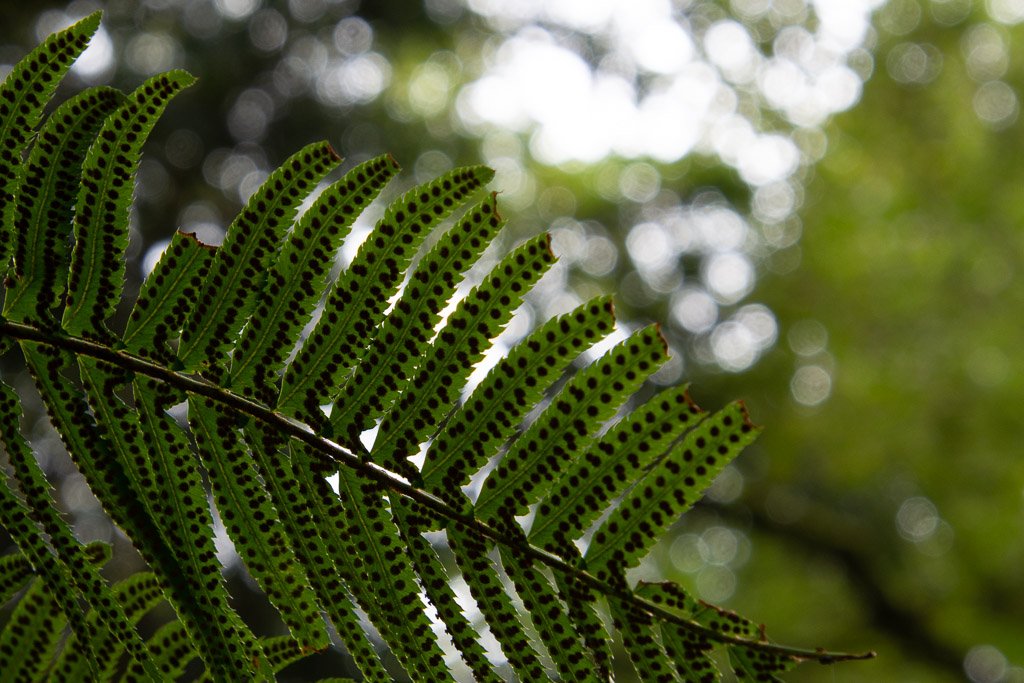 At this point we were thinking about where we would stay that night. As on all of our trips there is always more to see than we have time for. This was Saturday and we needed to get home on Tuesday. That left Sunday and Monday for more time in the park with a long drive on Tuesday. The bulk of the Park takes up the northern part of the Olympic Peninsula but there is also private and tribal land along the northern coast, the far northwest corner of the state, and the western portion. I wanted to go to that farthest most point of the continental U.S. but we were going to run out of time to do that and spend time in the rainforest. There is a narrow sliver of land all along the Pacific coastline that is also part of the Olympic NP so we decided that we would camp there for the night. That decided, we stopped at the next waterfall on our Waterfall Map.
At this point we were thinking about where we would stay that night. As on all of our trips there is always more to see than we have time for. This was Saturday and we needed to get home on Tuesday. That left Sunday and Monday for more time in the park with a long drive on Tuesday. The bulk of the Park takes up the northern part of the Olympic Peninsula but there is also private and tribal land along the northern coast, the far northwest corner of the state, and the western portion. I wanted to go to that farthest most point of the continental U.S. but we were going to run out of time to do that and spend time in the rainforest. There is a narrow sliver of land all along the Pacific coastline that is also part of the Olympic NP so we decided that we would camp there for the night. That decided, we stopped at the next waterfall on our Waterfall Map.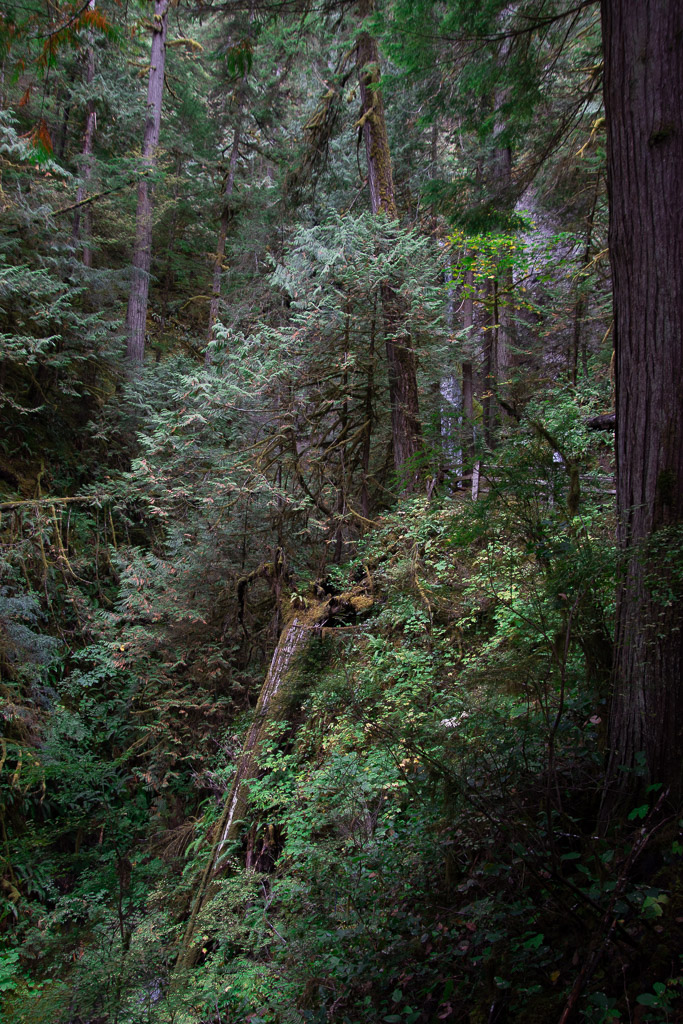 The trail to Marymere Falls was also within the Park.
The trail to Marymere Falls was also within the Park.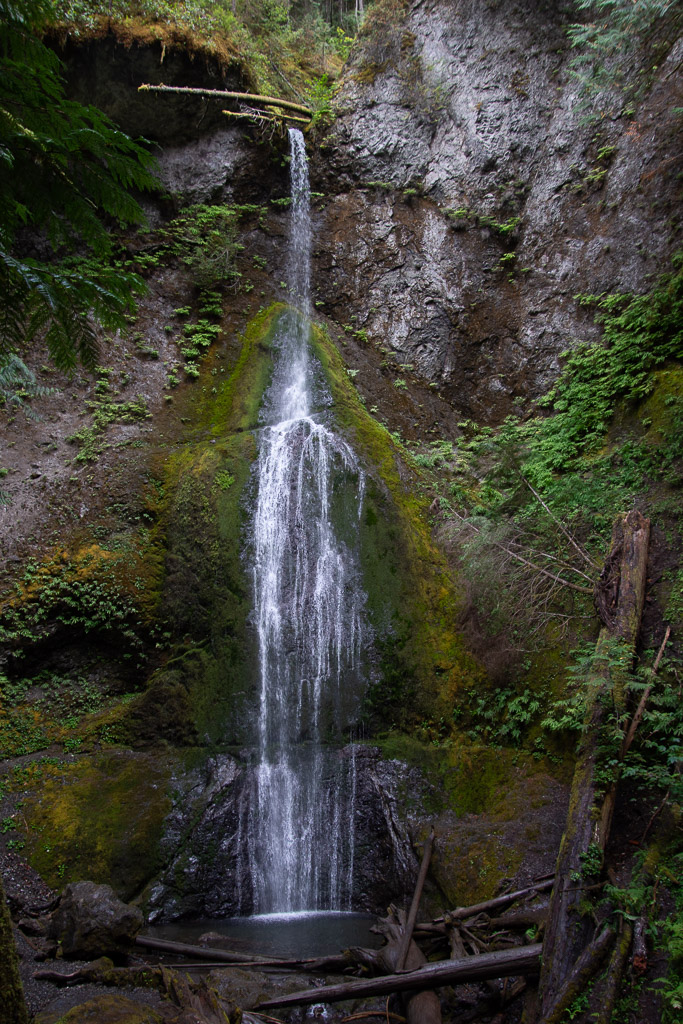 This waterfall is on Falls Creek and drops 90 feet. Take a look at the log at the top of the falls.
This waterfall is on Falls Creek and drops 90 feet. Take a look at the log at the top of the falls.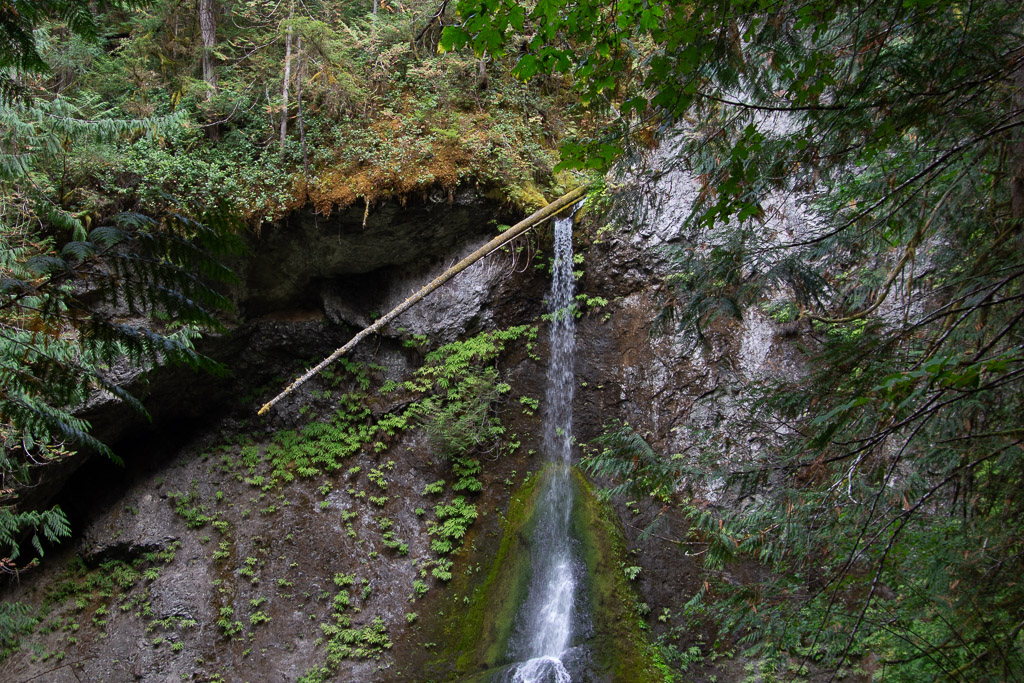 It made me think about the amount of water that must flow in this creek at times. That is a whole tree that is stuck at the top.
It made me think about the amount of water that must flow in this creek at times. That is a whole tree that is stuck at the top.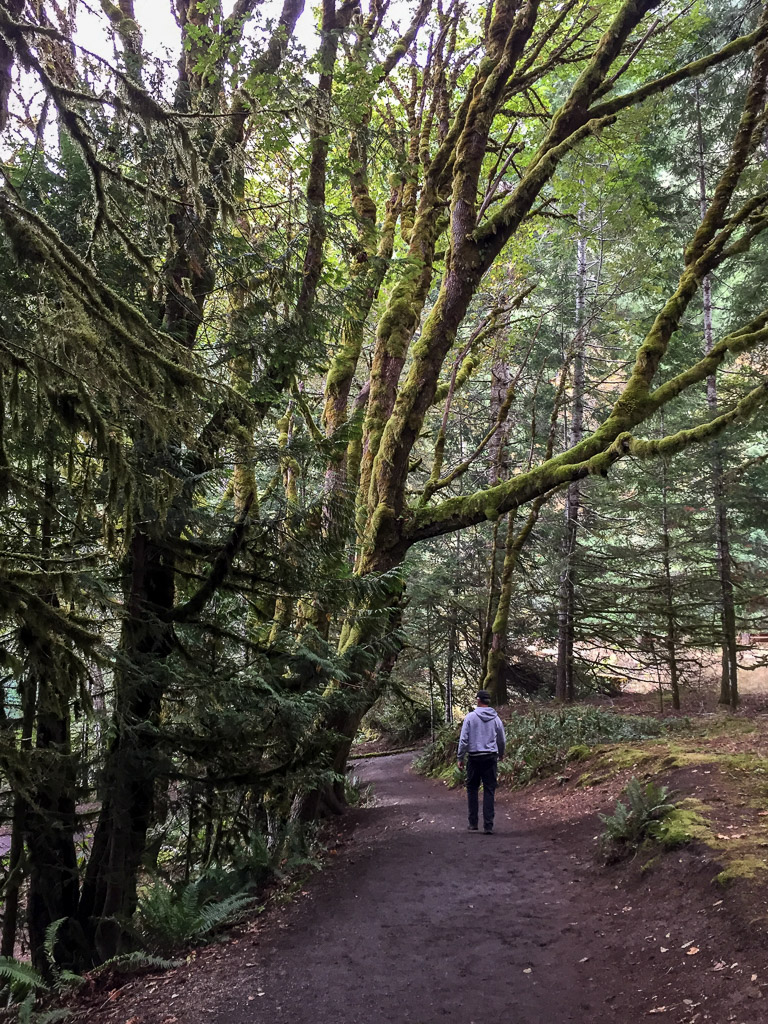 Magnificent trees.
Magnificent trees.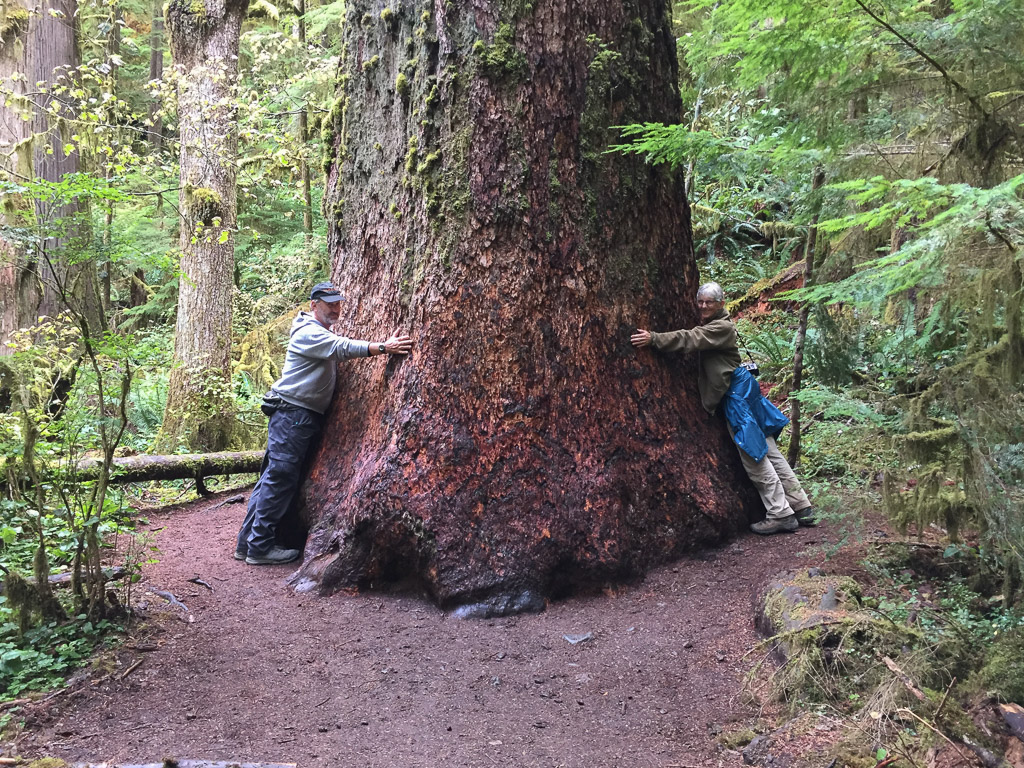 We were walking by this tree and I saw a young woman trying to prop her phone on the ground so that she and her friend could both be in a photo of this huge tree. I offered to take the photo and then she reciprocated.
We were walking by this tree and I saw a young woman trying to prop her phone on the ground so that she and her friend could both be in a photo of this huge tree. I offered to take the photo and then she reciprocated.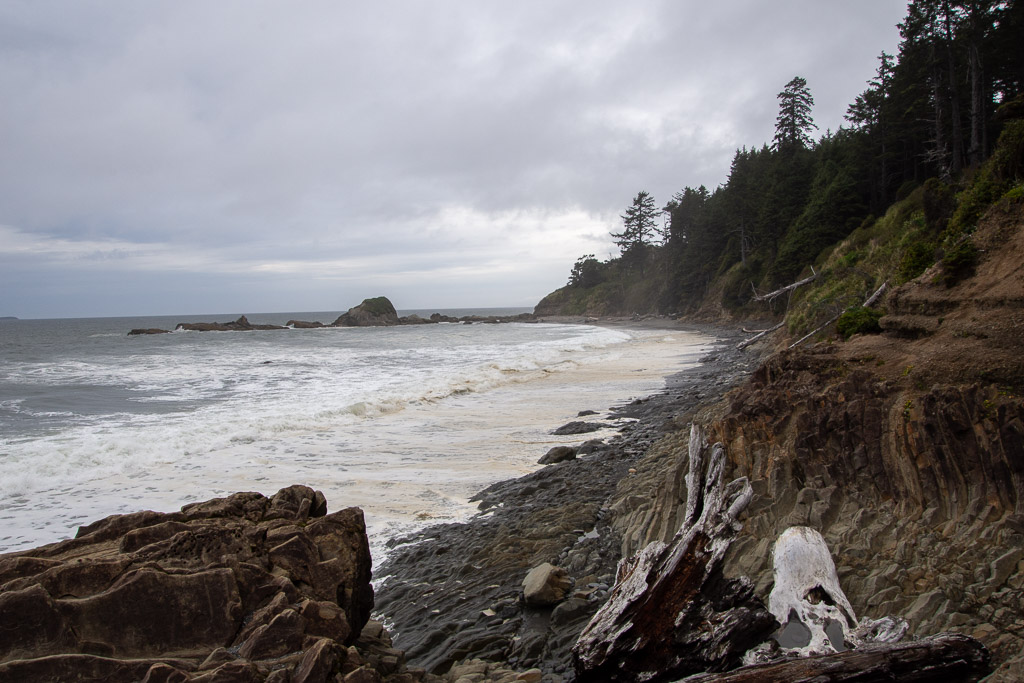 This was the first beach where we stopped. We drove south to find that the first campground was full. There was plenty of space in the other campgrounds where we stayed so we hadn't anticipated this. The beach. RV camping. Saturday night. None of the four beach campgrounds had campsites left.
This was the first beach where we stopped. We drove south to find that the first campground was full. There was plenty of space in the other campgrounds where we stayed so we hadn't anticipated this. The beach. RV camping. Saturday night. None of the four beach campgrounds had campsites left.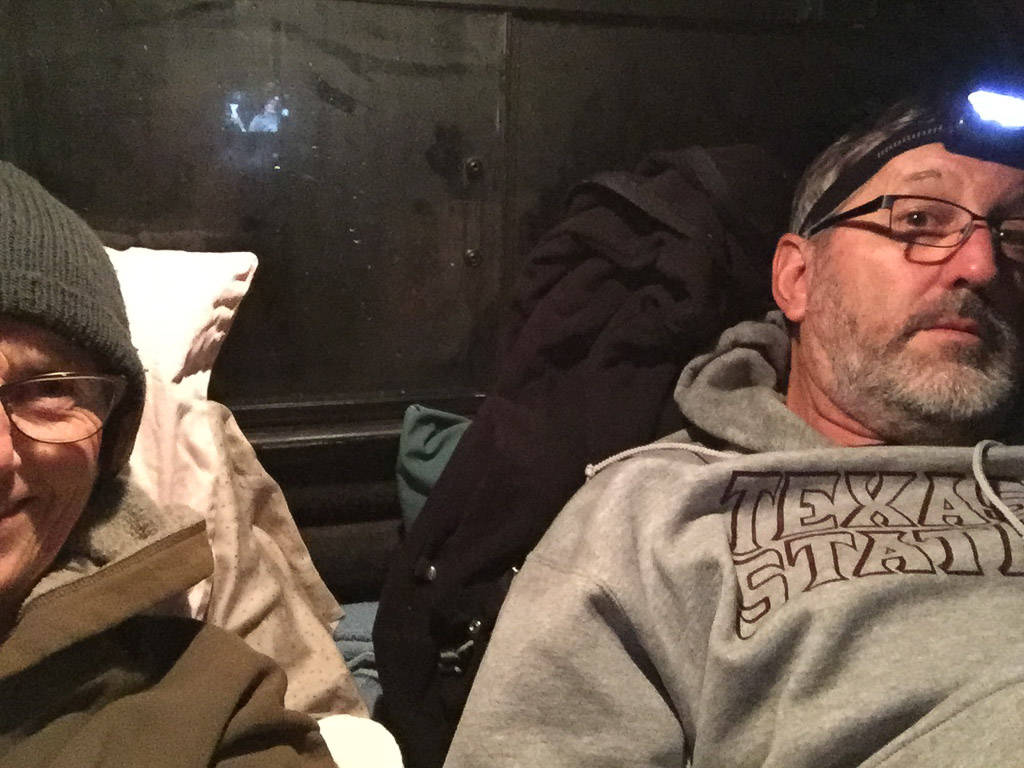 Saturday night lodging.
Saturday night lodging.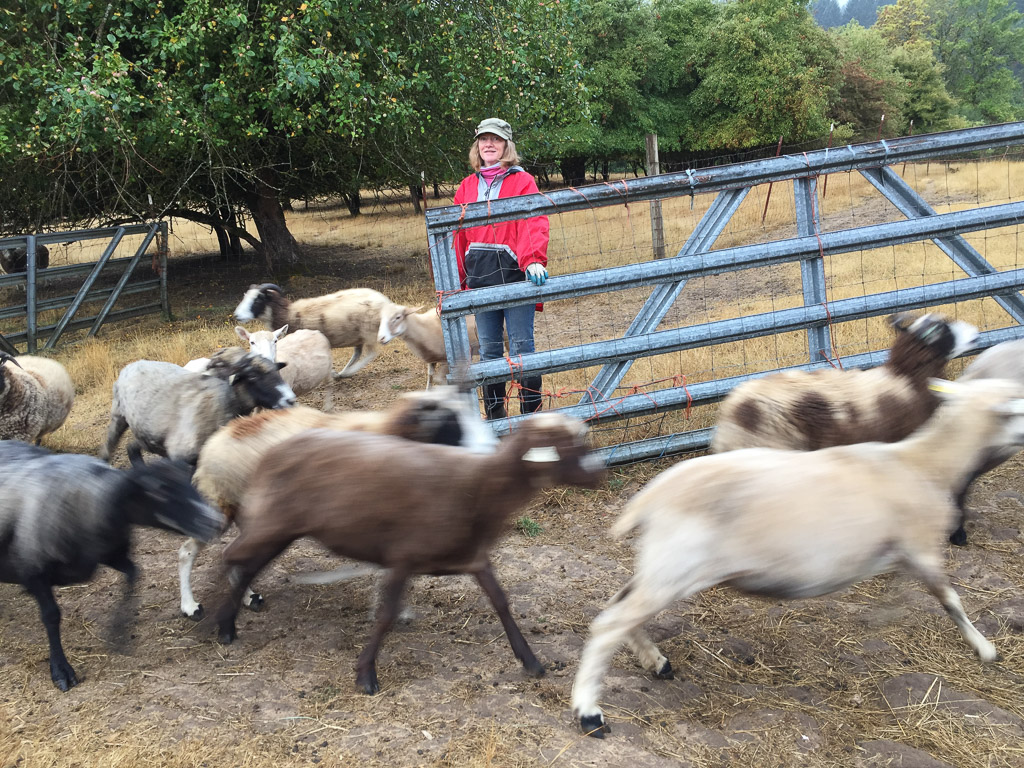 Karen lets the ewes out into the pasture where some of them race to see who will be first to find the pears that may have dropped since the day before.
Karen lets the ewes out into the pasture where some of them race to see who will be first to find the pears that may have dropped since the day before.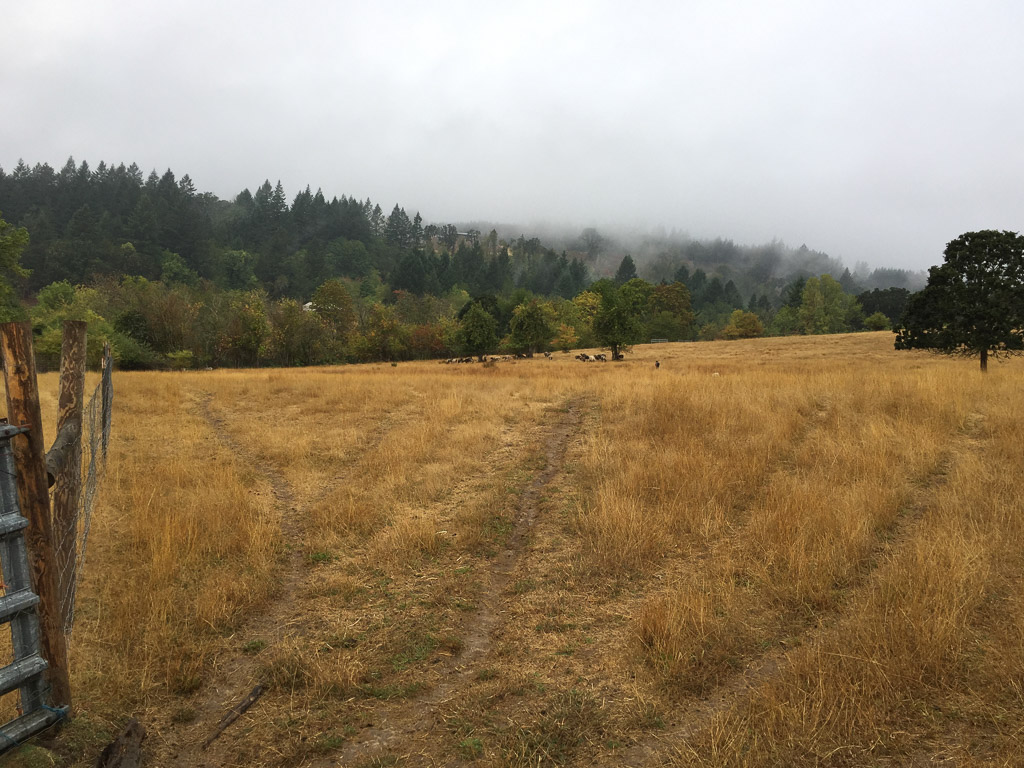 Some sheep stayed behind but this group checked out the pear snack department and then traipsed back to the barn for the morning hay.
Some sheep stayed behind but this group checked out the pear snack department and then traipsed back to the barn for the morning hay.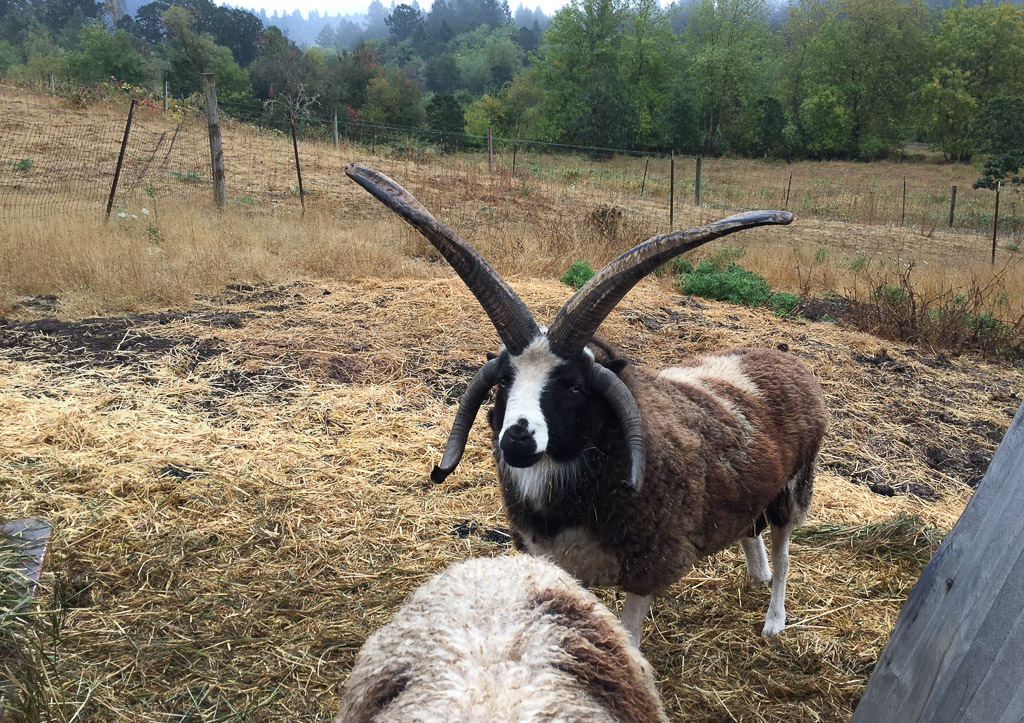 Nearby we met Windy Acres Lightning, who happens to be Buster's sire.
Nearby we met Windy Acres Lightning, who happens to be Buster's sire.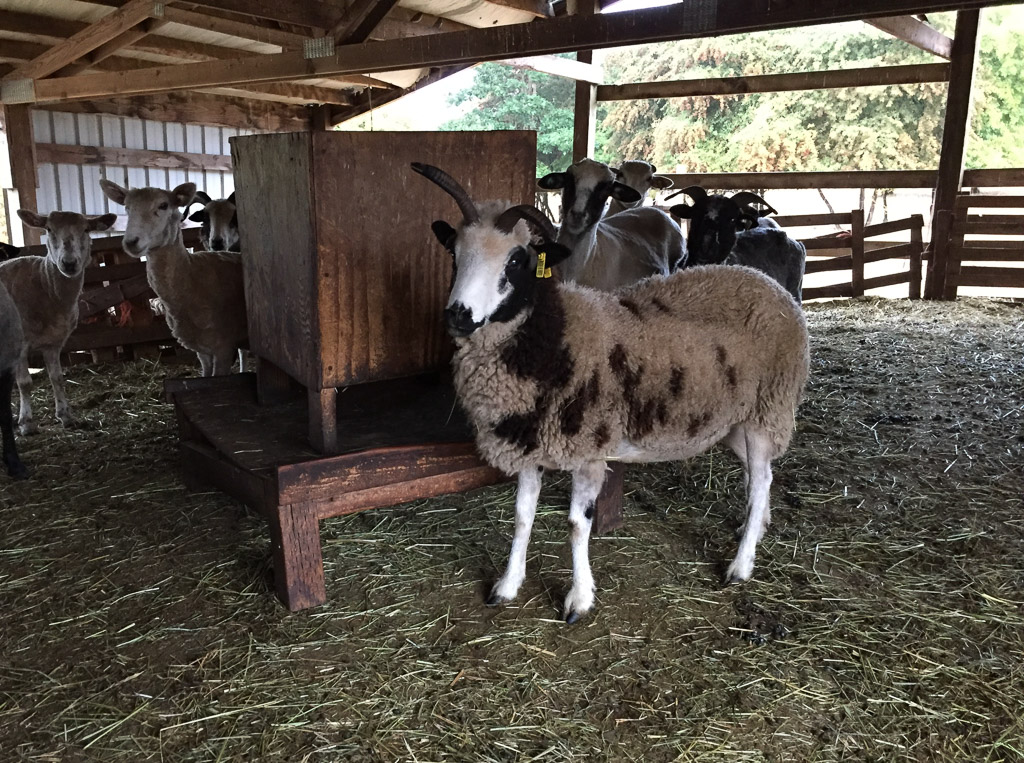 This is inside the barn. There are a couple of Meridian ewes here but I don't think this is one because she has a bideawee ear tag. I like these feeders and think that we should try making some.
This is inside the barn. There are a couple of Meridian ewes here but I don't think this is one because she has a bideawee ear tag. I like these feeders and think that we should try making some.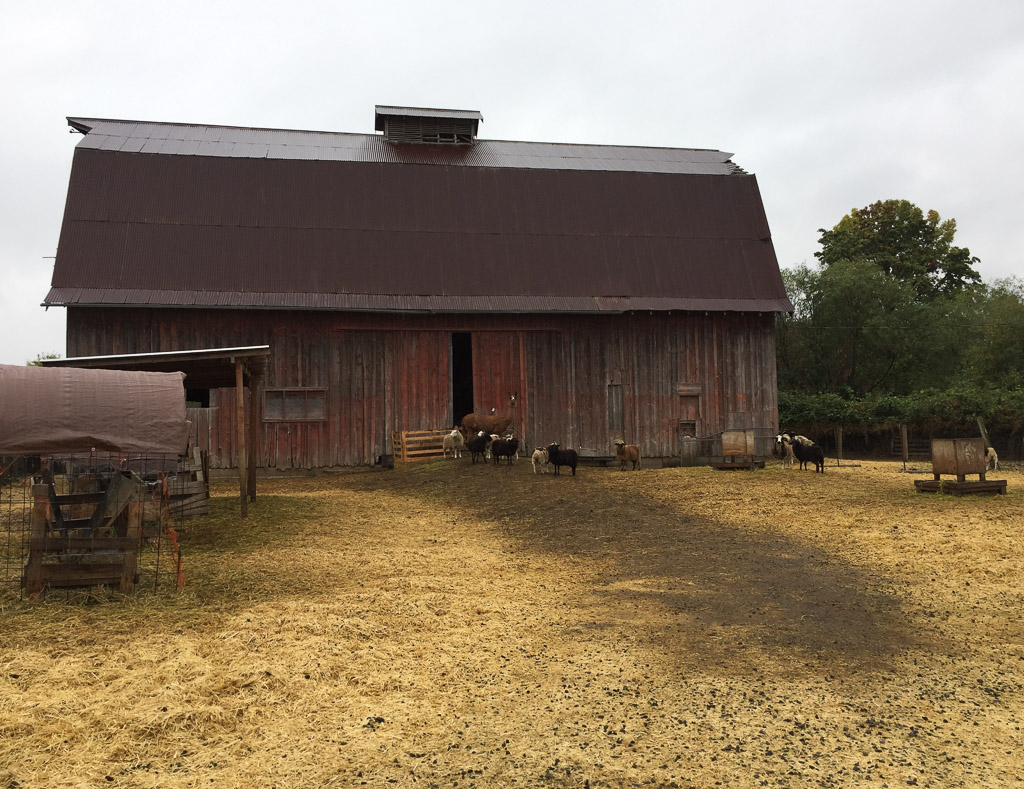 This is another barn on the property. Those are some of the ewe lambs and their guard llama.
This is another barn on the property. Those are some of the ewe lambs and their guard llama.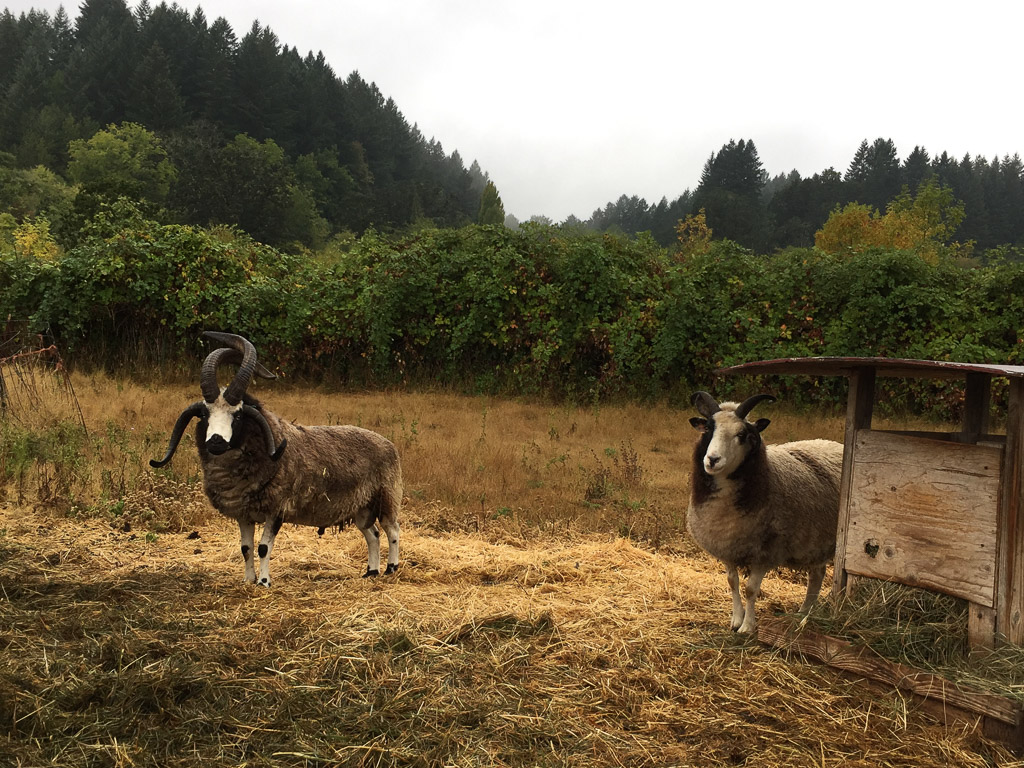 Across the road (the property is split into 4 pieces by the country roads) there are more rams. This is Hunters Glen Roy Rogers and his wether buddy. I sure which that I could get some of these horns like Lightning and Roy Rogers on my sheep.
Across the road (the property is split into 4 pieces by the country roads) there are more rams. This is Hunters Glen Roy Rogers and his wether buddy. I sure which that I could get some of these horns like Lightning and Roy Rogers on my sheep.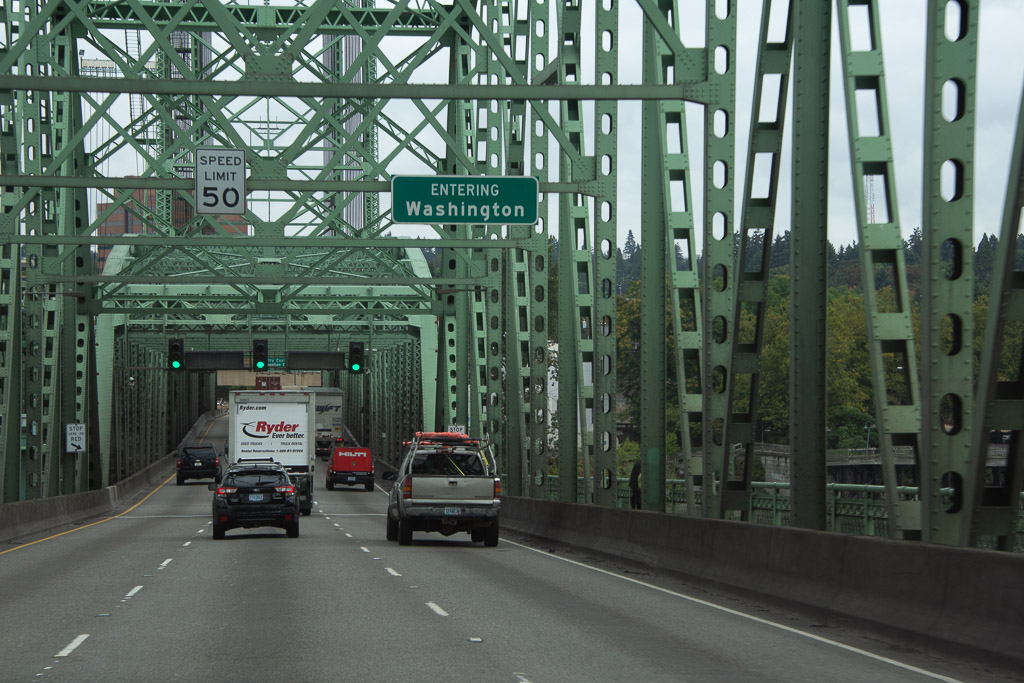 After breakfast we got on the road to our real destination.
After breakfast we got on the road to our real destination.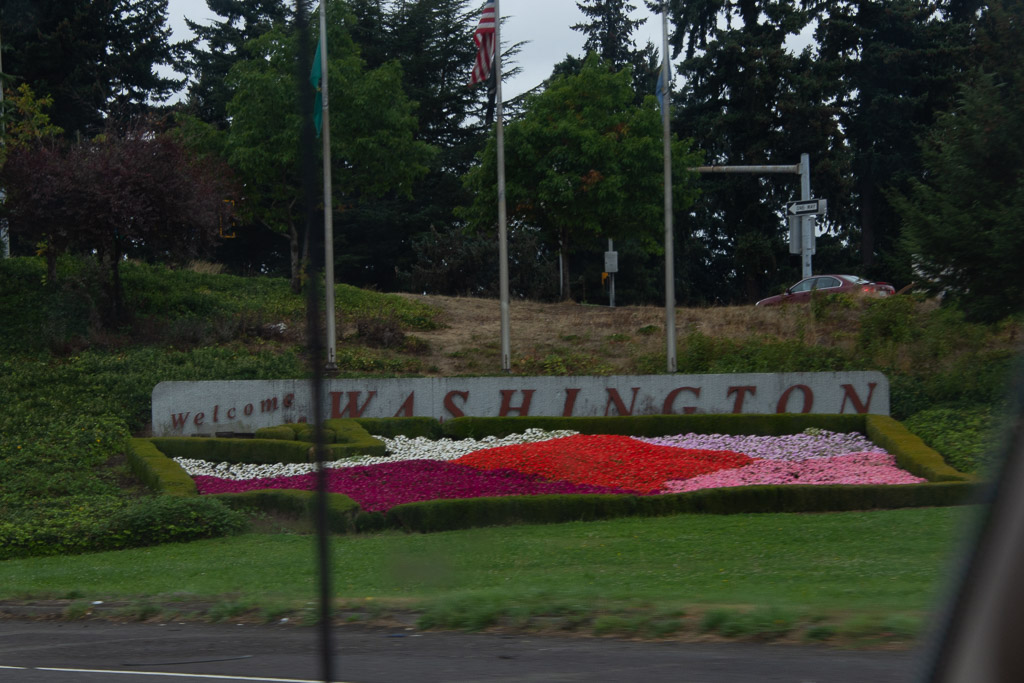 Here is a more welcoming sign along with pretty flowers.
Here is a more welcoming sign along with pretty flowers. 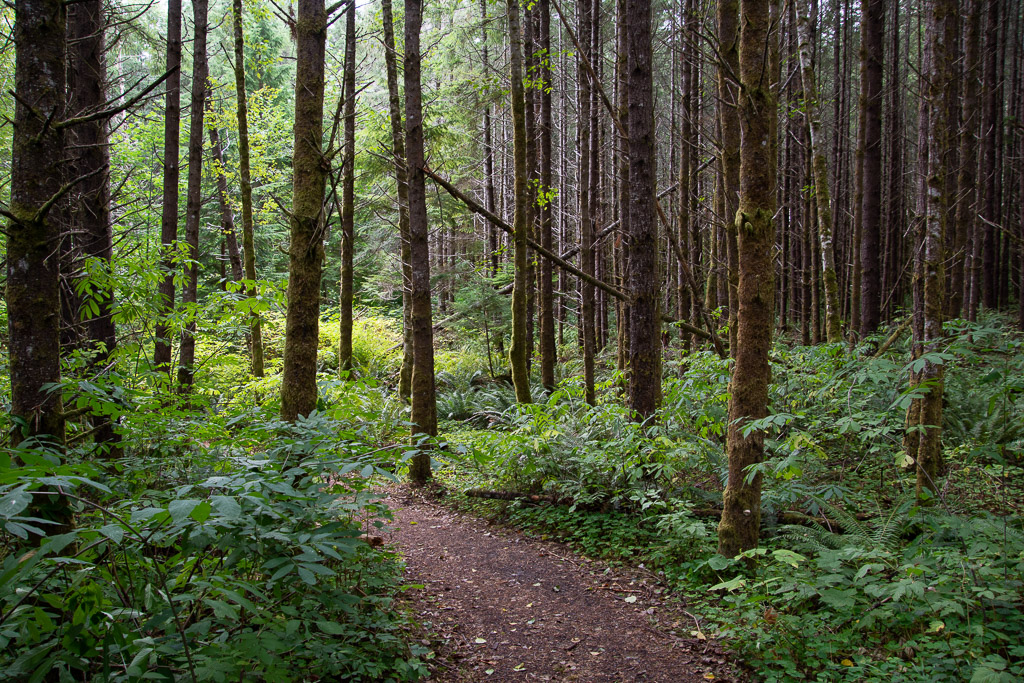 We were headed to Mt. St. Helens National Volcanic Monument for our first stop. We followed State Route 504 along the Toutle River and stopped before entering the NVM at this site where the sign said Sediment Retention Structure. We followed a trail through the beautiful woods.
We were headed to Mt. St. Helens National Volcanic Monument for our first stop. We followed State Route 504 along the Toutle River and stopped before entering the NVM at this site where the sign said Sediment Retention Structure. We followed a trail through the beautiful woods.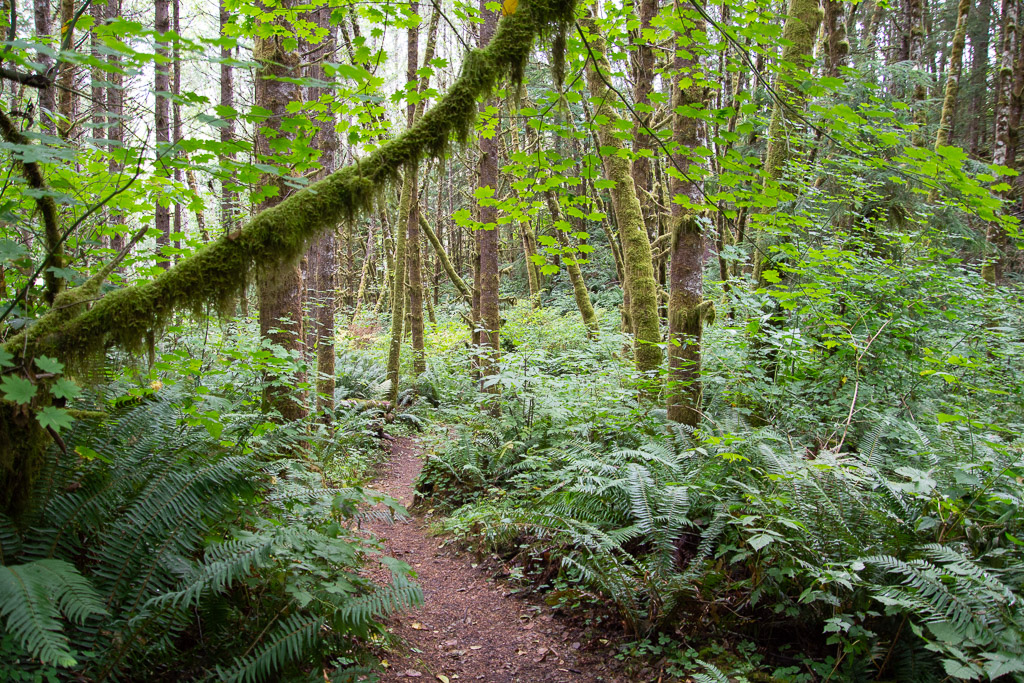
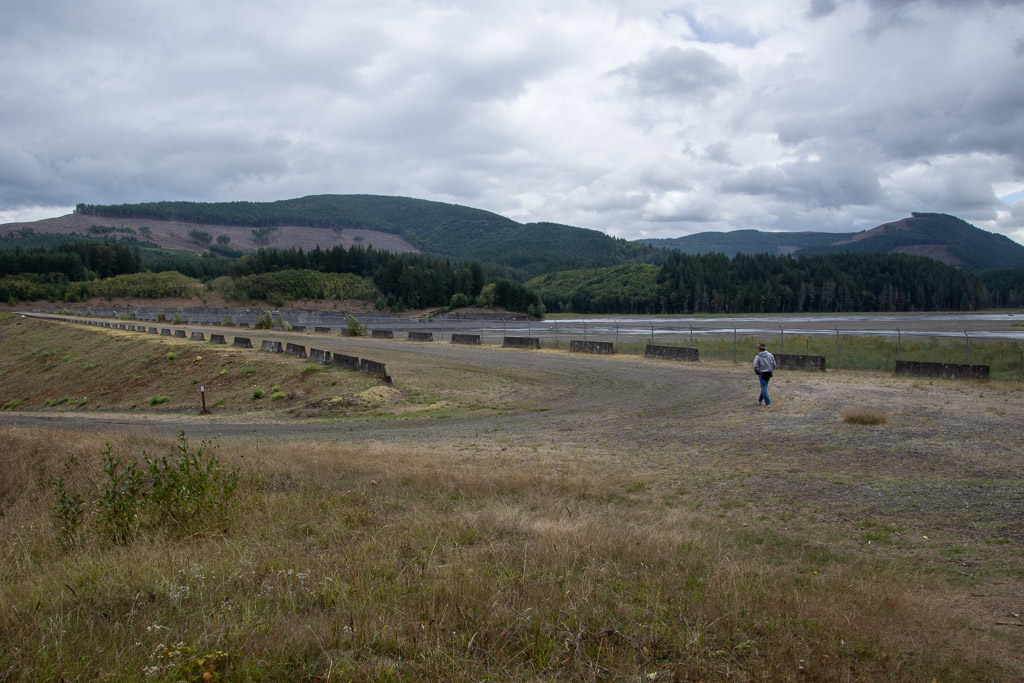 After a short walk we reached the dam. A sign told us: "As the North Fork Toutle River re-formed and carved new channels in the deposits [after the eruption in 1980], it became one of the world's most sediment-laden rivers. The U.S. Army Corp of Engineers build the Sediment Retention Structure to trap sediments before they are carried further downstream. Sediment clogs river channels, worsening floods, and degrades water quality and aquatic habitat." It is hard to tell the scale from my photos but this is a massive structure.
After a short walk we reached the dam. A sign told us: "As the North Fork Toutle River re-formed and carved new channels in the deposits [after the eruption in 1980], it became one of the world's most sediment-laden rivers. The U.S. Army Corp of Engineers build the Sediment Retention Structure to trap sediments before they are carried further downstream. Sediment clogs river channels, worsening floods, and degrades water quality and aquatic habitat." It is hard to tell the scale from my photos but this is a massive structure.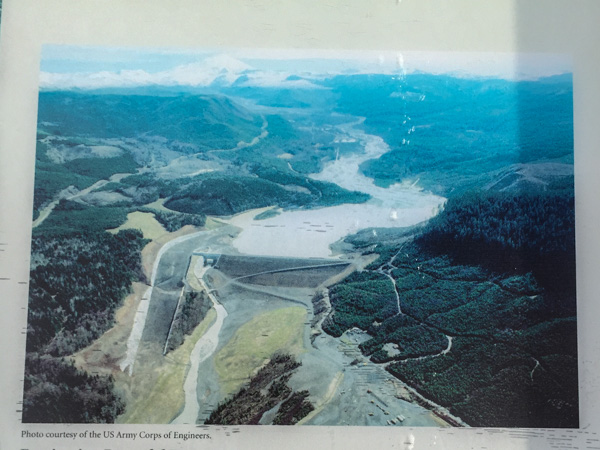 Here is an aerial view on the sign.
Here is an aerial view on the sign.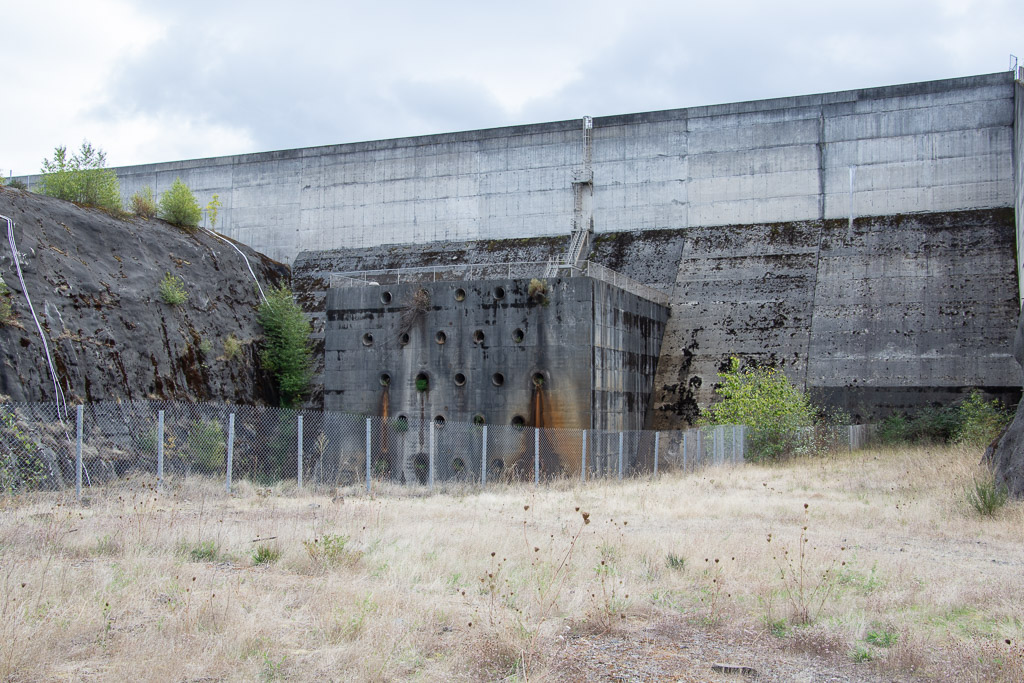 This part of the structure is on the aerial photo but is the "little" part at the left end of the horizontal part of the retention structure and to the right of the spillway.
This part of the structure is on the aerial photo but is the "little" part at the left end of the horizontal part of the retention structure and to the right of the spillway.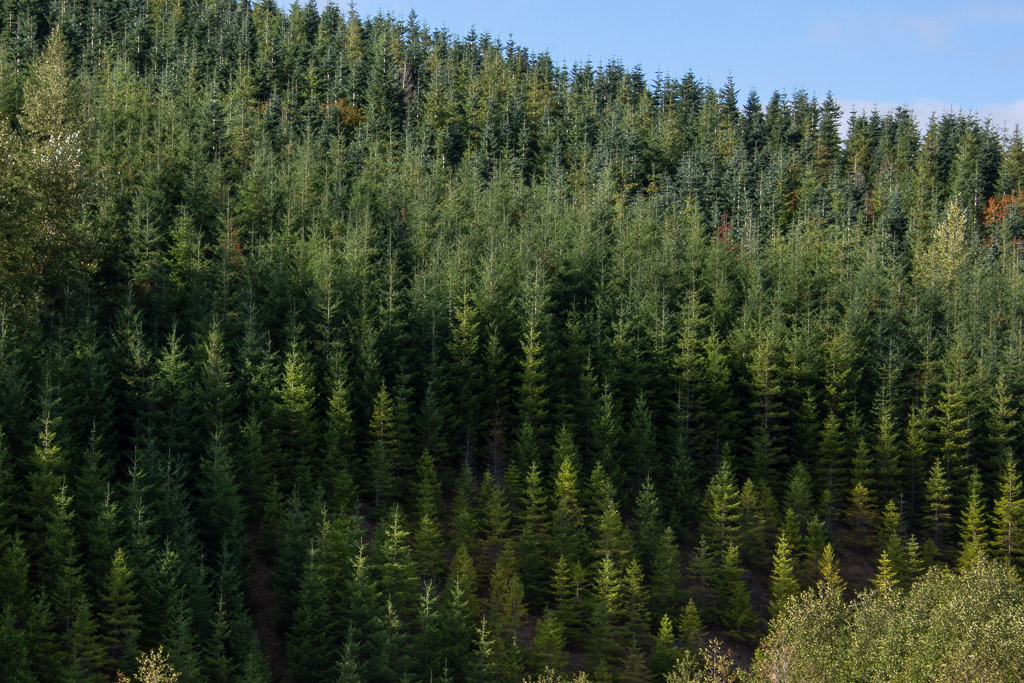 We continued on to the NVM. There are plenty of interpretive sites before you get there, some put out by the state and some by Weyerhaeuser. From their site: "Weyerhaeuser Company began more than 100 years ago with 900,000 acres of timberland, three employees and a small office in Tacoma, Washington. Founded in 1900 by Frederick Weyerhaeuser, we’ve grown to become one of the largest sustainable forest products companies in the world." I was interested in the divergent viewpoints about the response to the destruction caused by the 1980 eruption. Weyerhaeuser began to reforest as soon as they could, planting millions of seedlings. Their sign shows a contrast between their now almost 40-year-old forests and the vegetation across the boundary where the response was to let nature take its course. Both arguments are convincing and I am not bashing a giant lumber company. After all I live in a wood house. The film that we saw in the Mt. St. Helens NVM Visitor Center, however, describes how quickly the communities begin to recover, starting with gophers, of all things, that survived in their burrows under ash-covered areas and moved soil and seeds to the surface. The film points out that the communities are now at their most diverse and as the natural sequence of forestation continues there will eventually be less diversity as one sees in a mature forest.
We continued on to the NVM. There are plenty of interpretive sites before you get there, some put out by the state and some by Weyerhaeuser. From their site: "Weyerhaeuser Company began more than 100 years ago with 900,000 acres of timberland, three employees and a small office in Tacoma, Washington. Founded in 1900 by Frederick Weyerhaeuser, we’ve grown to become one of the largest sustainable forest products companies in the world." I was interested in the divergent viewpoints about the response to the destruction caused by the 1980 eruption. Weyerhaeuser began to reforest as soon as they could, planting millions of seedlings. Their sign shows a contrast between their now almost 40-year-old forests and the vegetation across the boundary where the response was to let nature take its course. Both arguments are convincing and I am not bashing a giant lumber company. After all I live in a wood house. The film that we saw in the Mt. St. Helens NVM Visitor Center, however, describes how quickly the communities begin to recover, starting with gophers, of all things, that survived in their burrows under ash-covered areas and moved soil and seeds to the surface. The film points out that the communities are now at their most diverse and as the natural sequence of forestation continues there will eventually be less diversity as one sees in a mature forest.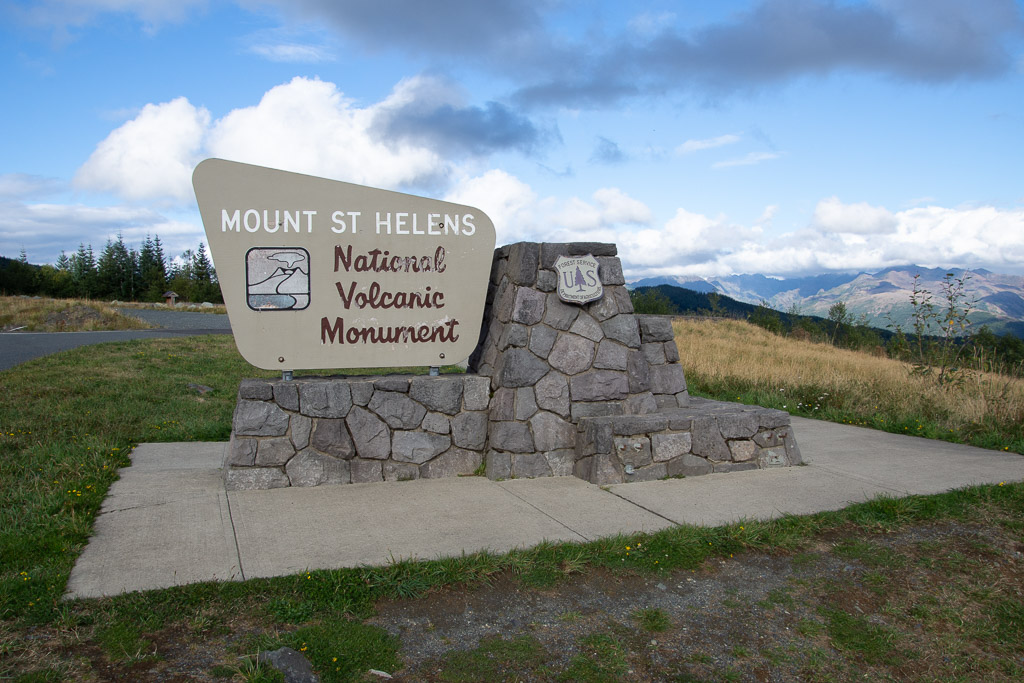 It isn't possible to see all of the NVM in one day. No road goes all the way through and it is a lot of driving to get to other entrances. We chose this northwest entrance and realize that we'll have to come back some day.
It isn't possible to see all of the NVM in one day. No road goes all the way through and it is a lot of driving to get to other entrances. We chose this northwest entrance and realize that we'll have to come back some day. 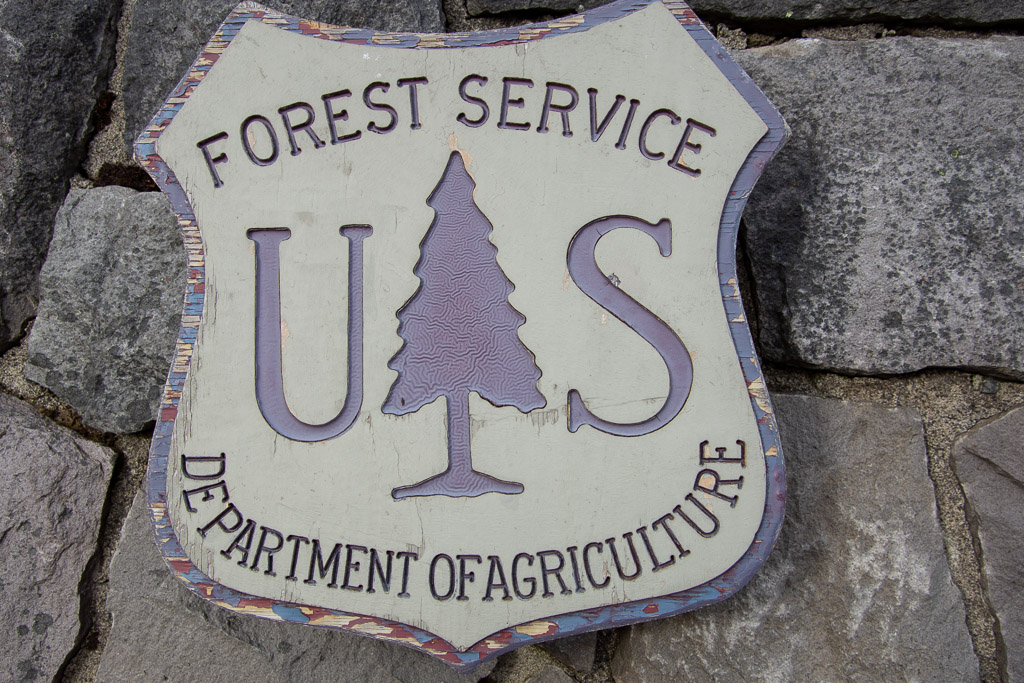 I liked this closeup of the USFS sign--see the detail in the tree? Someone had to think of that.
I liked this closeup of the USFS sign--see the detail in the tree? Someone had to think of that.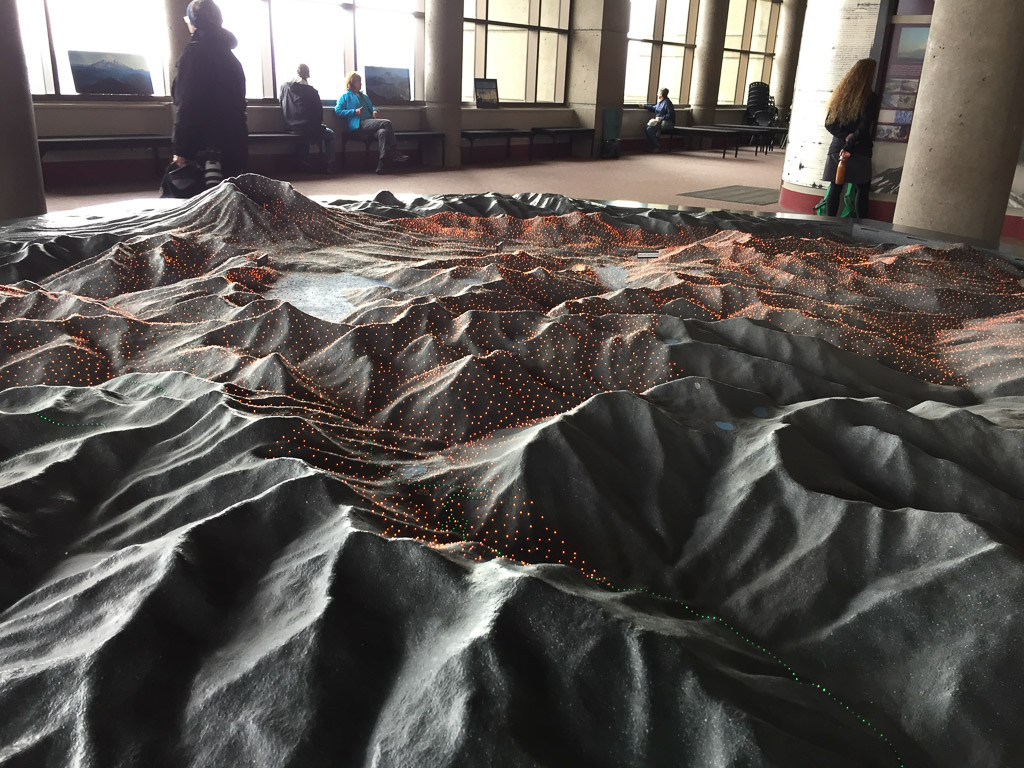 We started at the Visitors' Center called Johnston Ridge Observatory. Here is a model of the terrain and as the story is told different color lights come on to show lava flows, ash deposition, etc.
We started at the Visitors' Center called Johnston Ridge Observatory. Here is a model of the terrain and as the story is told different color lights come on to show lava flows, ash deposition, etc. 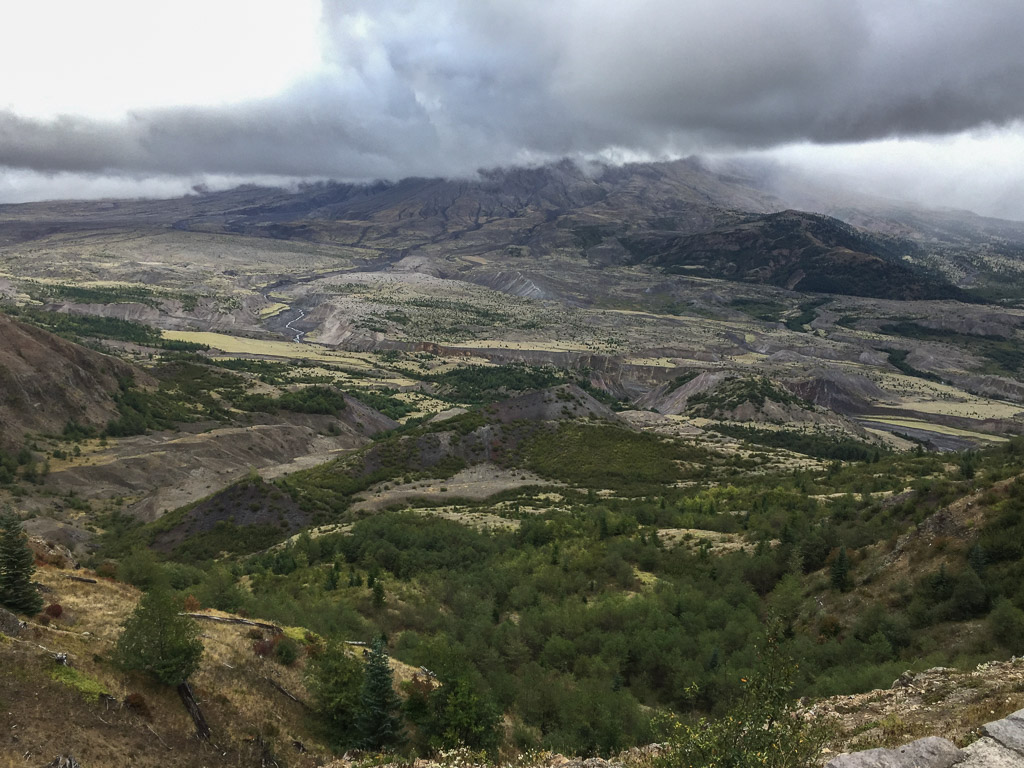 View of the mountain. We never got a clear look at it because of the clouds. It is amazing to think that the whole area in this photo was impacted by the blast and that everything in the middle part of the photo is deposits from the volcano.
View of the mountain. We never got a clear look at it because of the clouds. It is amazing to think that the whole area in this photo was impacted by the blast and that everything in the middle part of the photo is deposits from the volcano.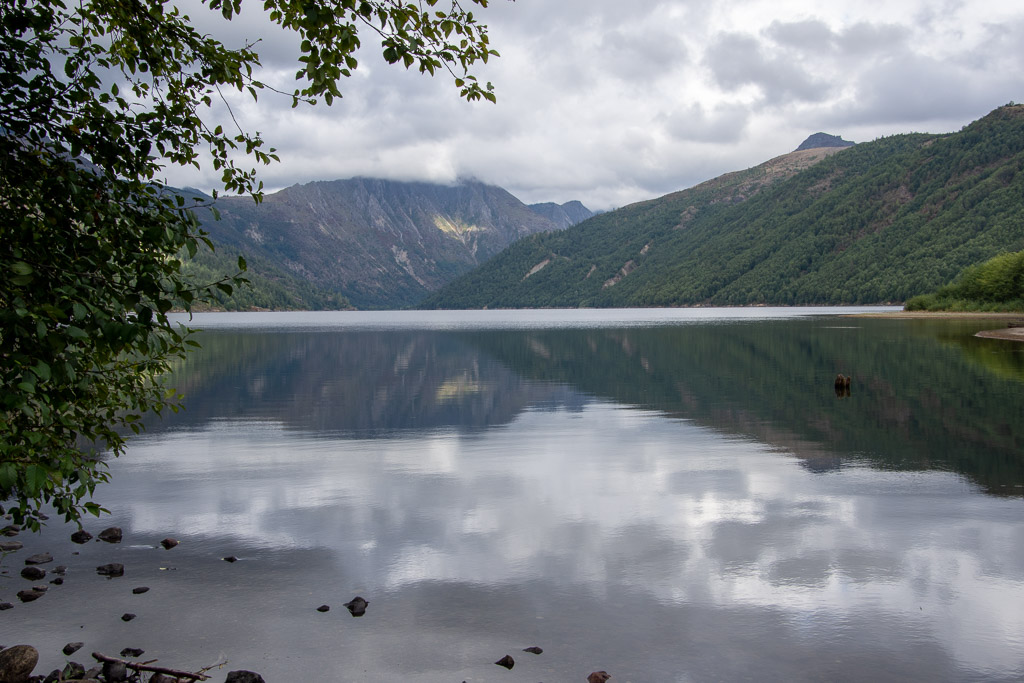 Coldwater Lake was formed when volcanic debris blocked Coldwater Creek.
Coldwater Lake was formed when volcanic debris blocked Coldwater Creek. 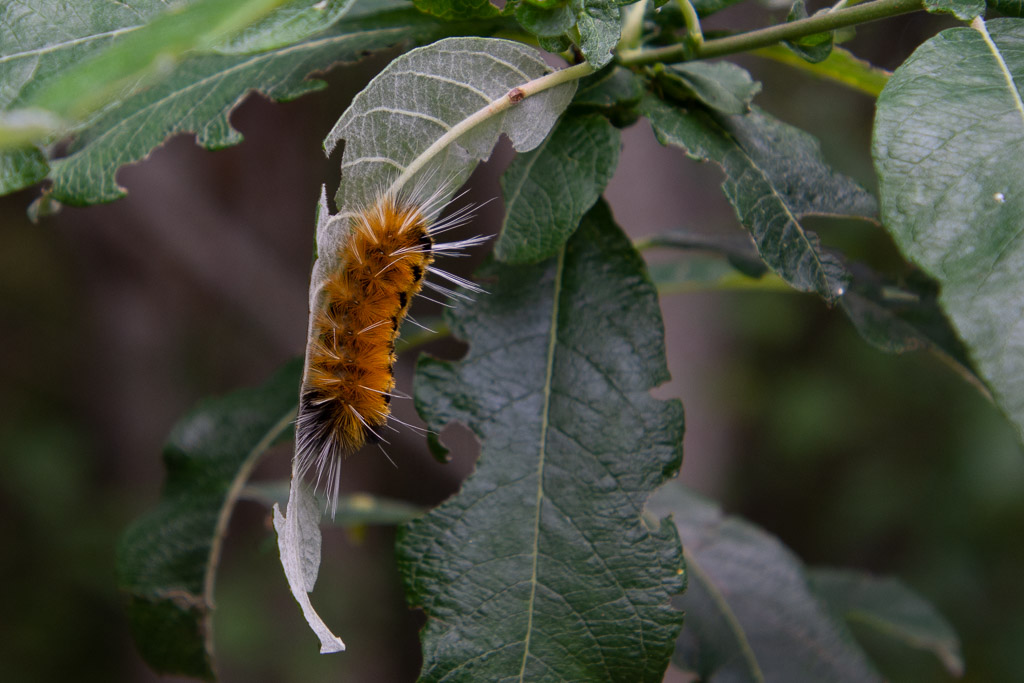 A wildlife shot!
A wildlife shot! 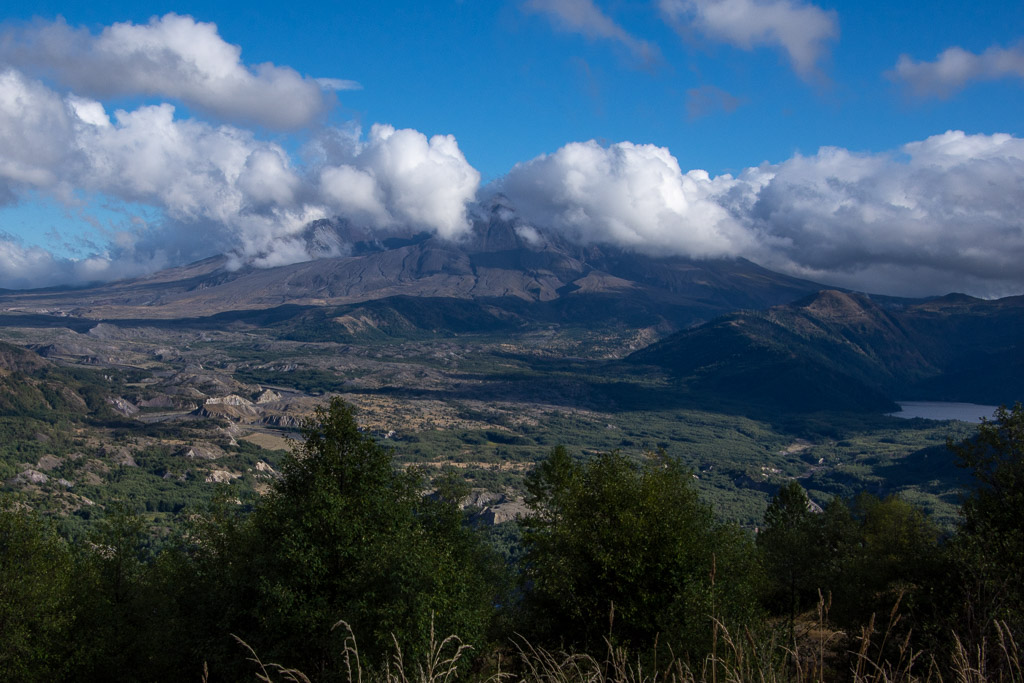 We stopped at an overlook before leaving the area and watched as the clouds moved past the mountain. The eruption of Mt. St. Helens was mostly from the side and it created a valley that faces mostly north (the cloud filled part on the left of the photo).
We stopped at an overlook before leaving the area and watched as the clouds moved past the mountain. The eruption of Mt. St. Helens was mostly from the side and it created a valley that faces mostly north (the cloud filled part on the left of the photo). 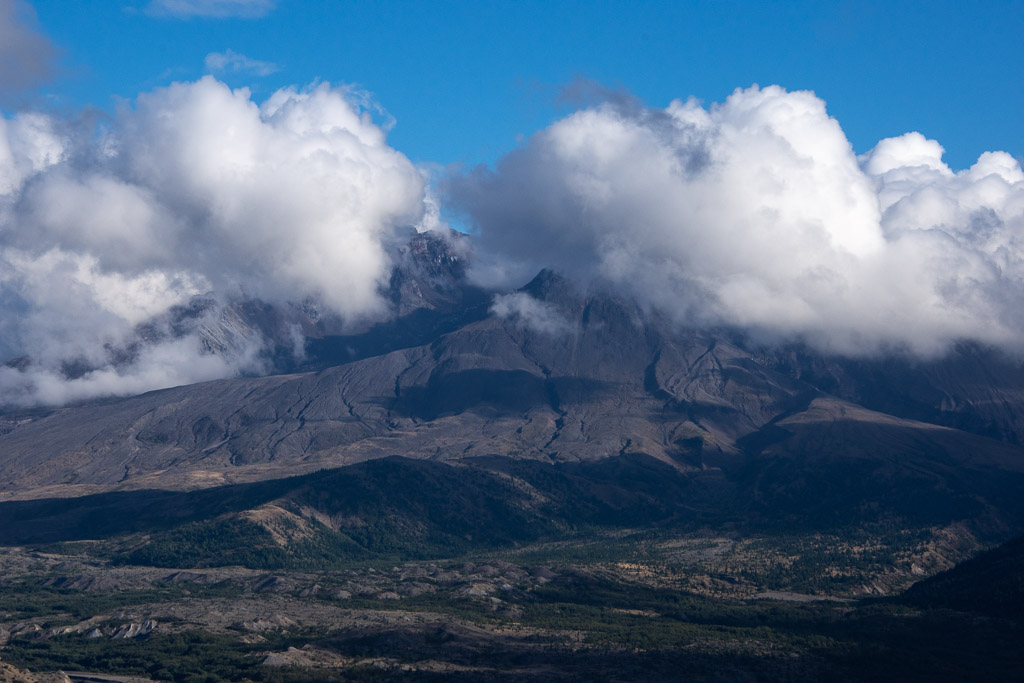 We caught a few views of what is left of the mountain.
We caught a few views of what is left of the mountain.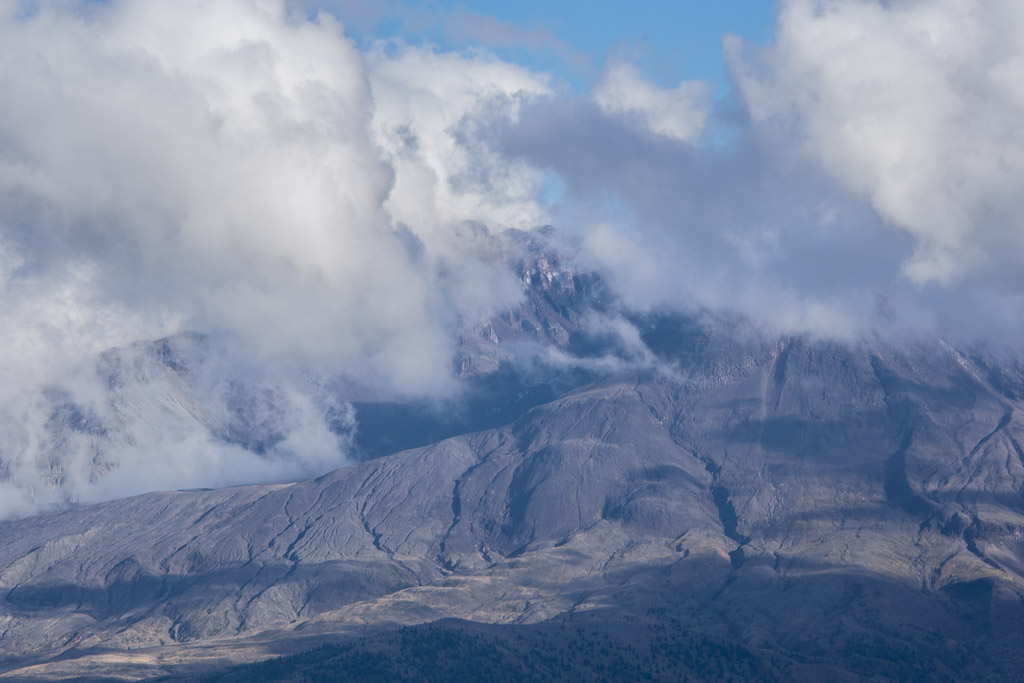 This definitely warrants a return trip.
This definitely warrants a return trip.